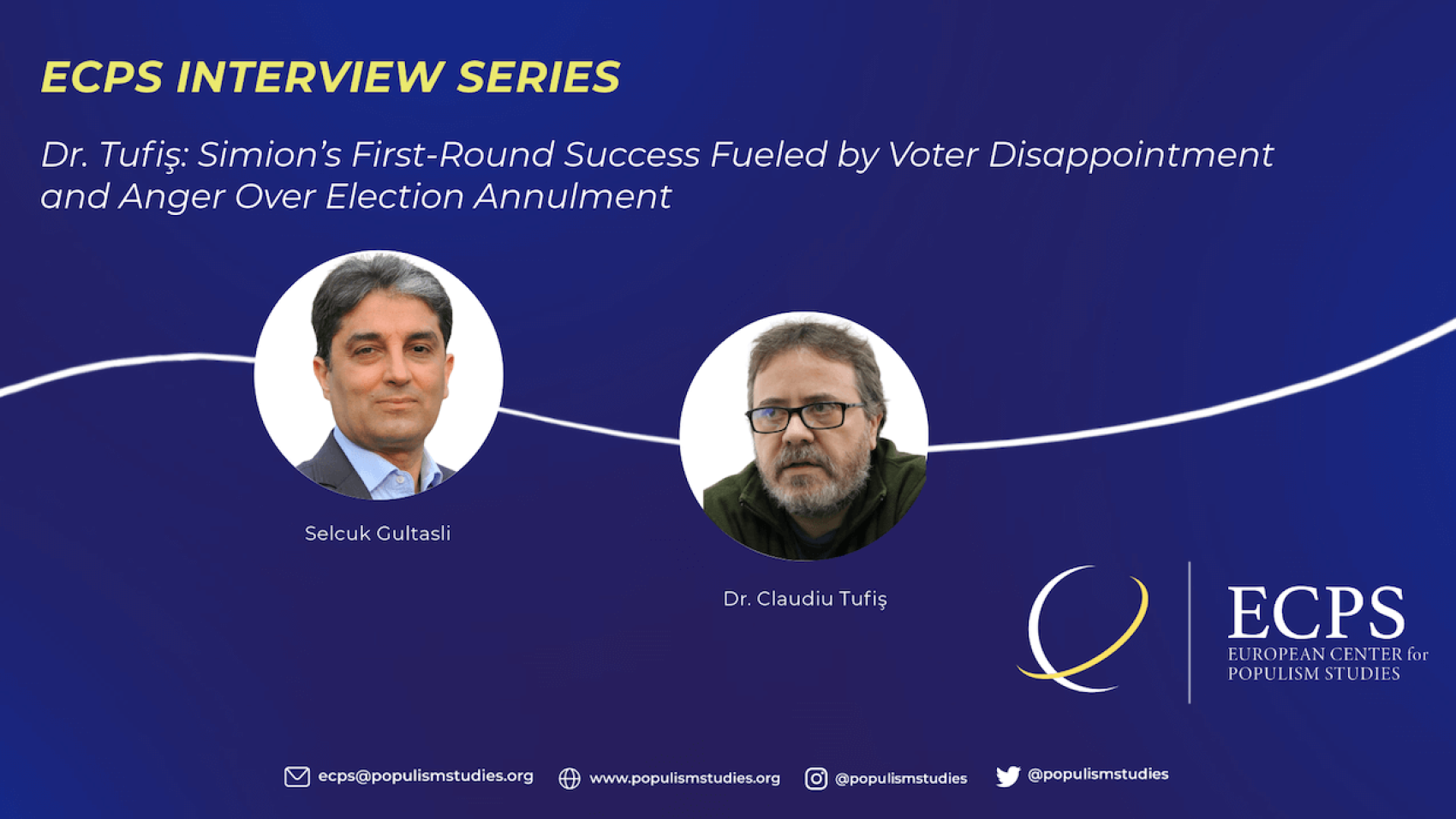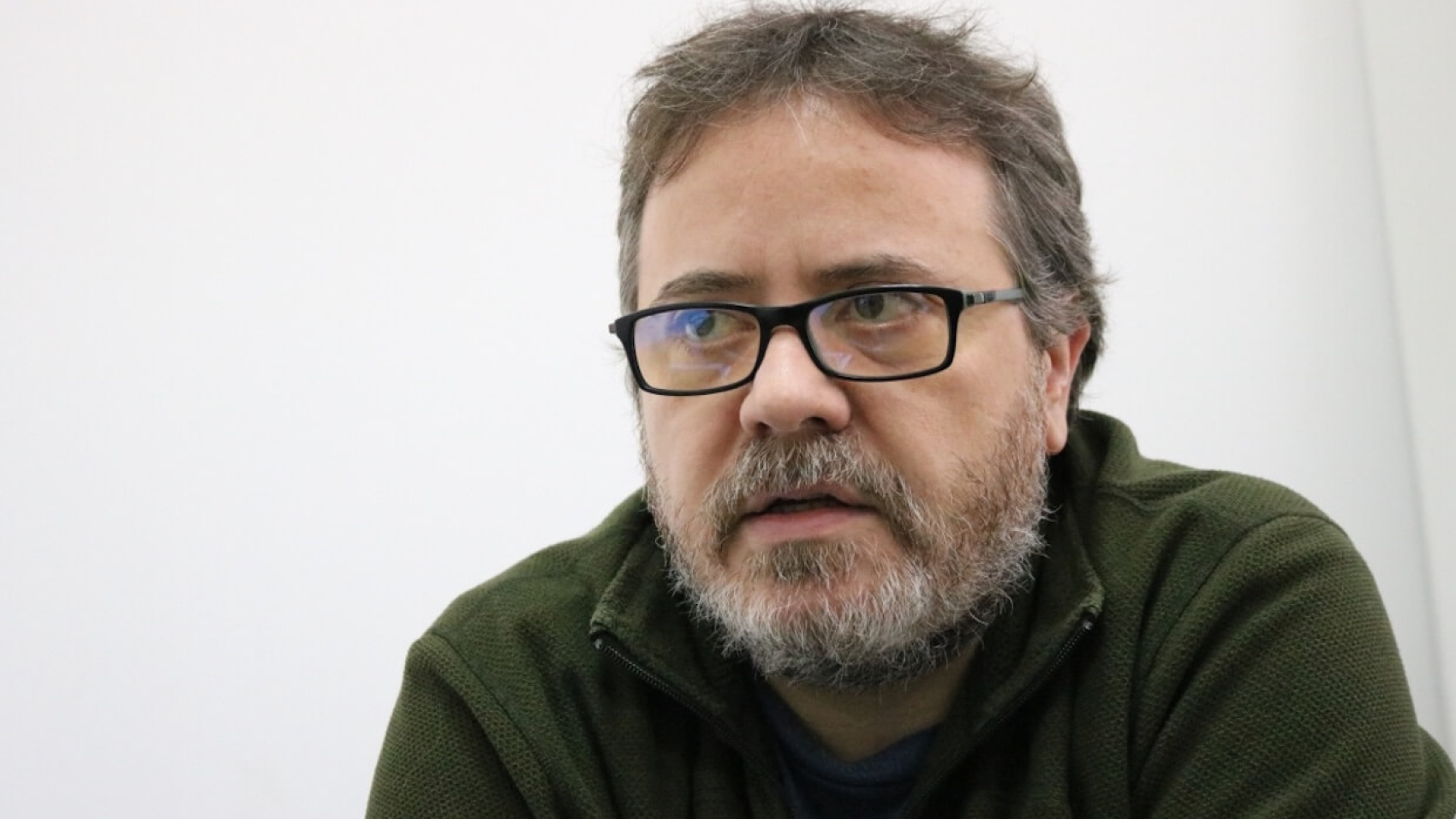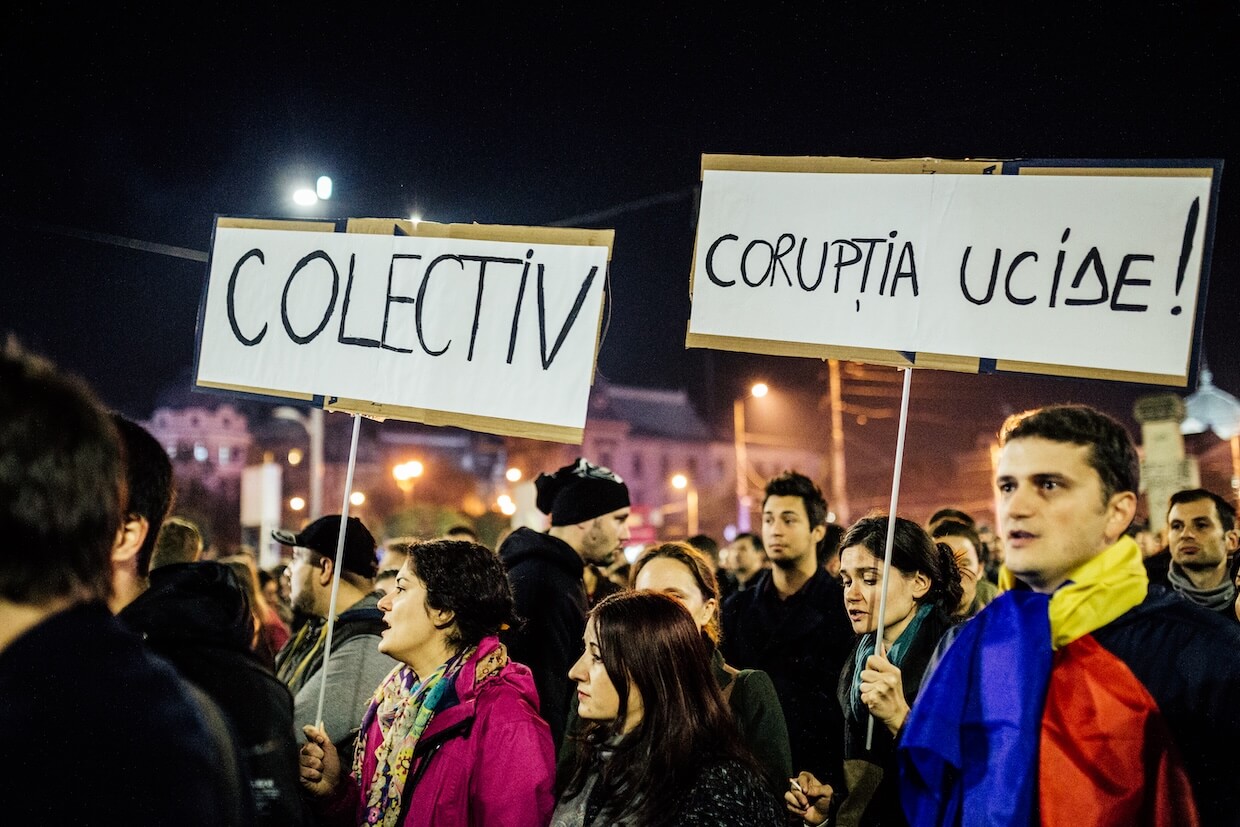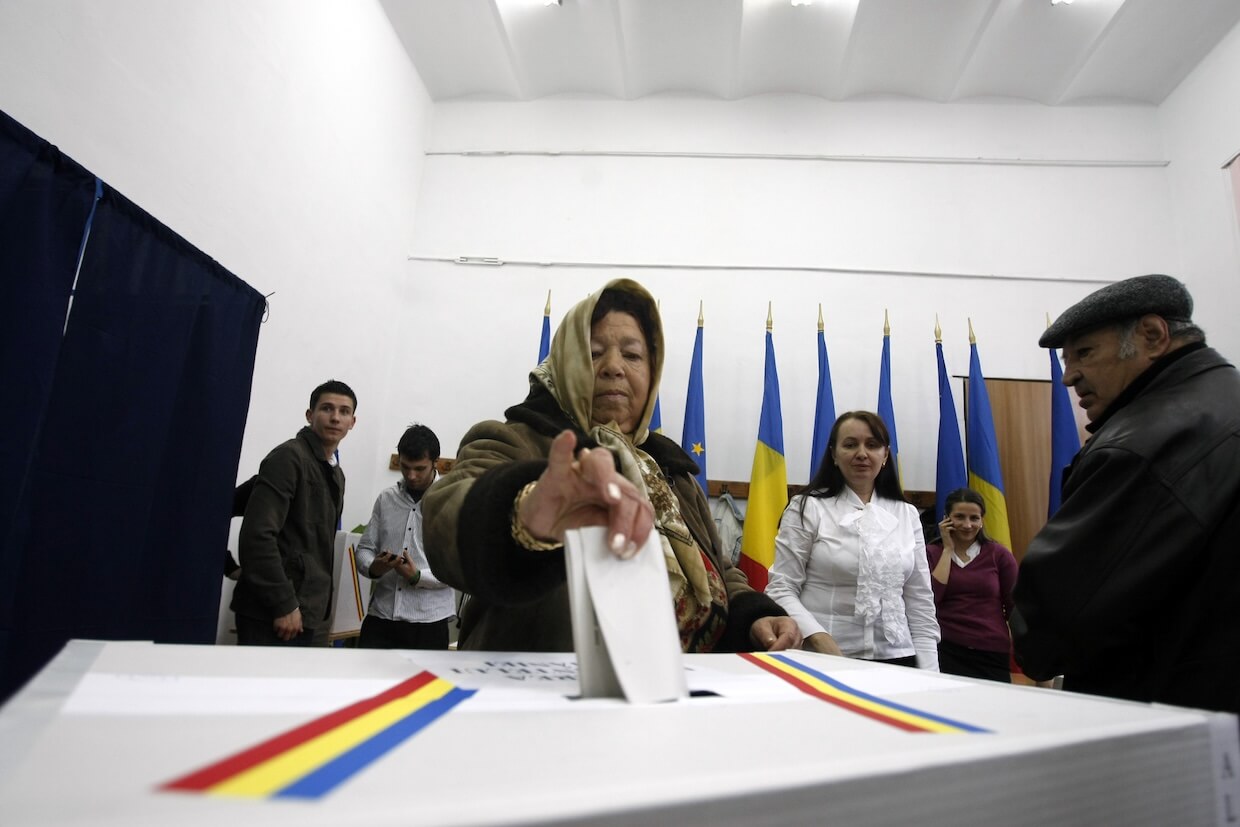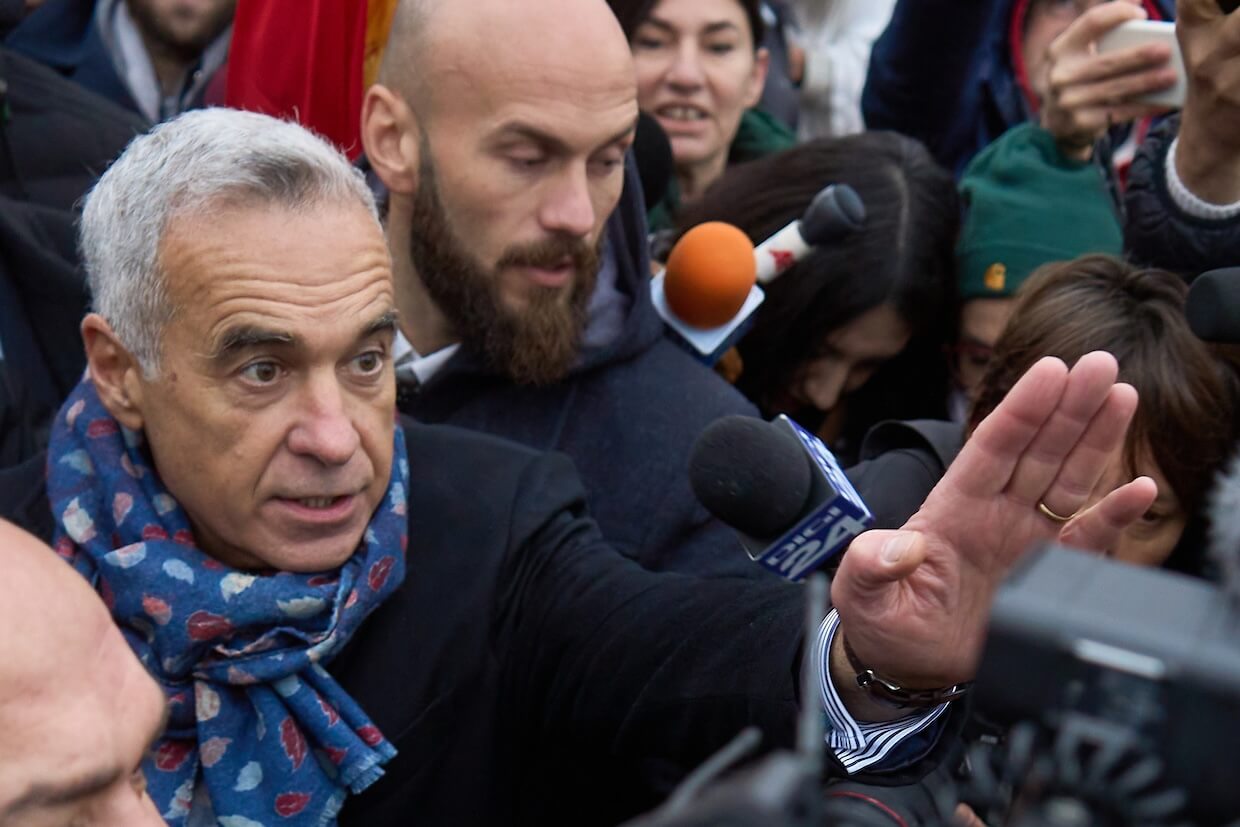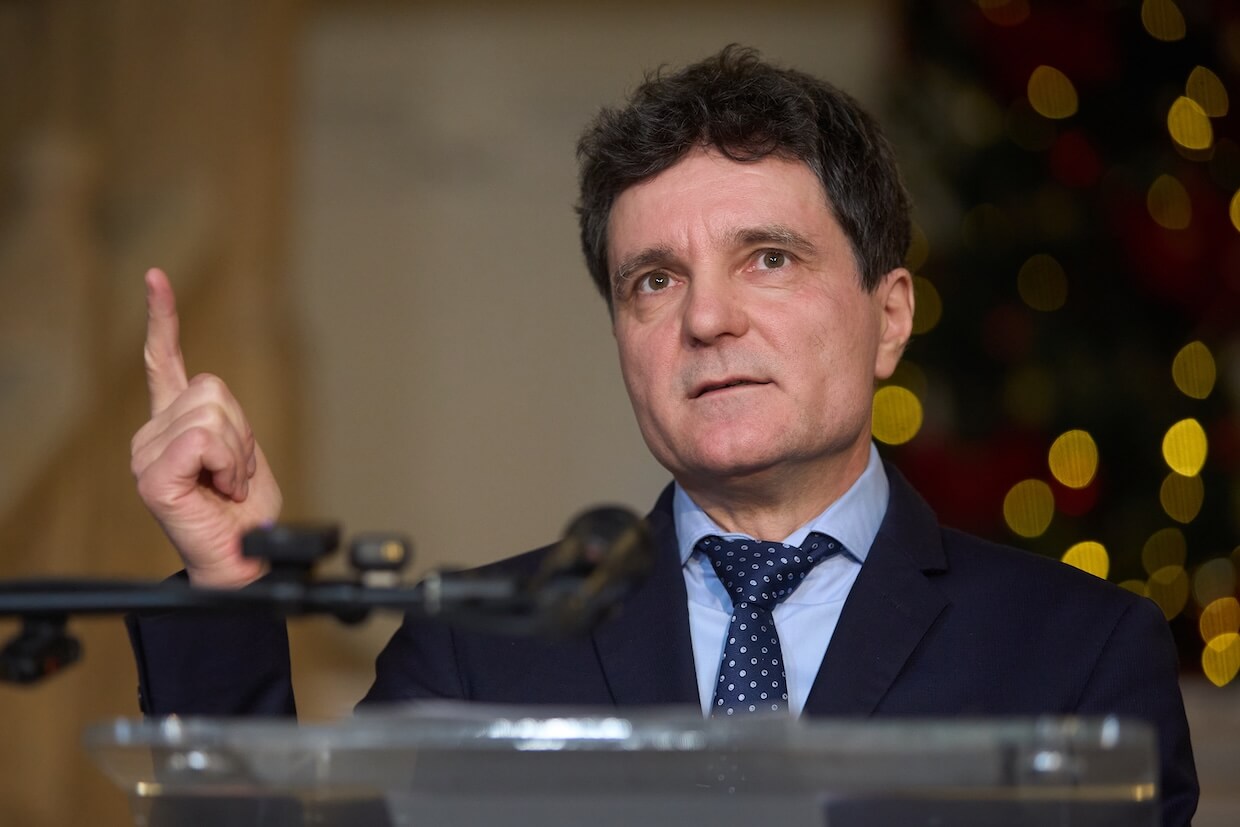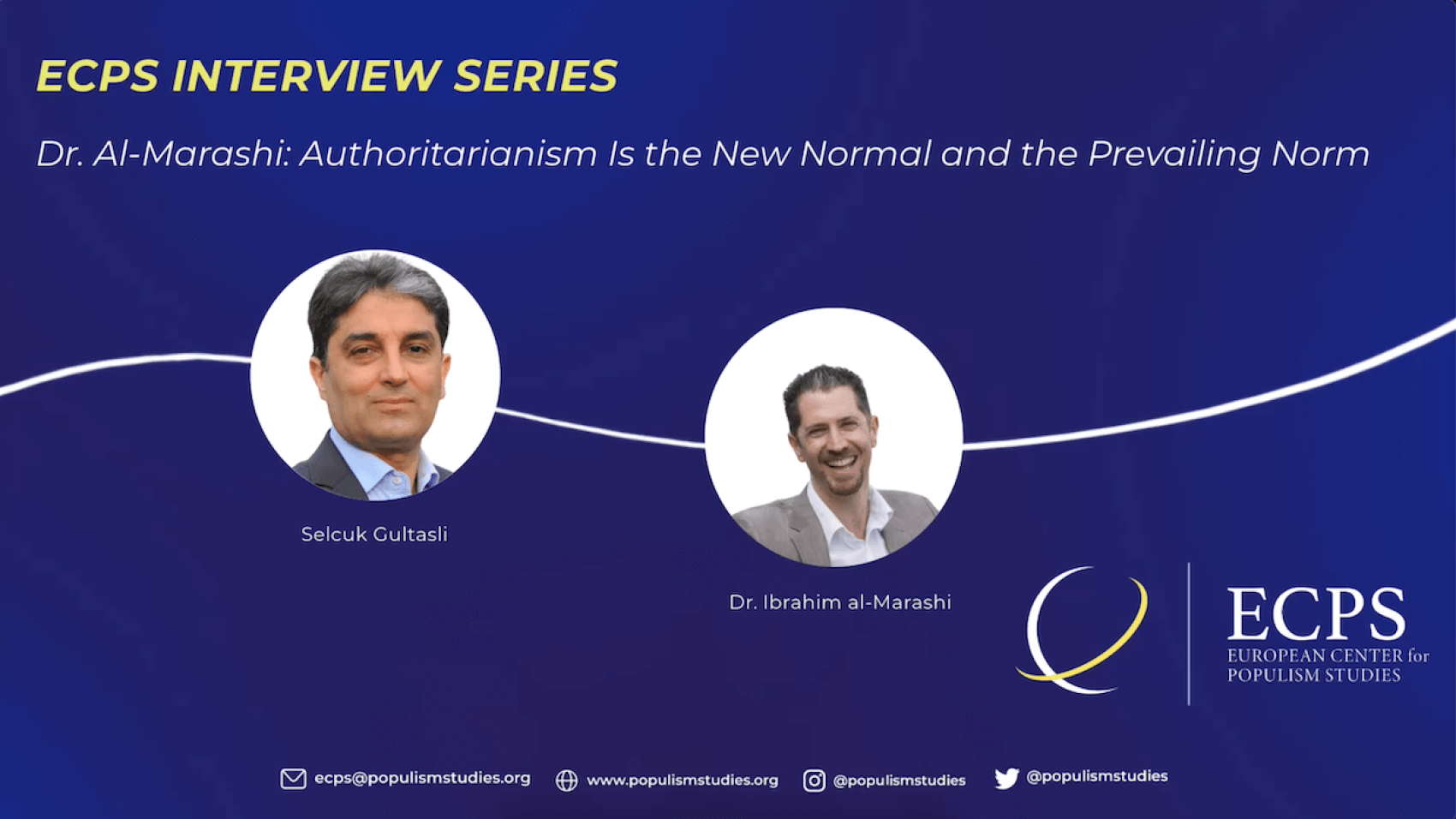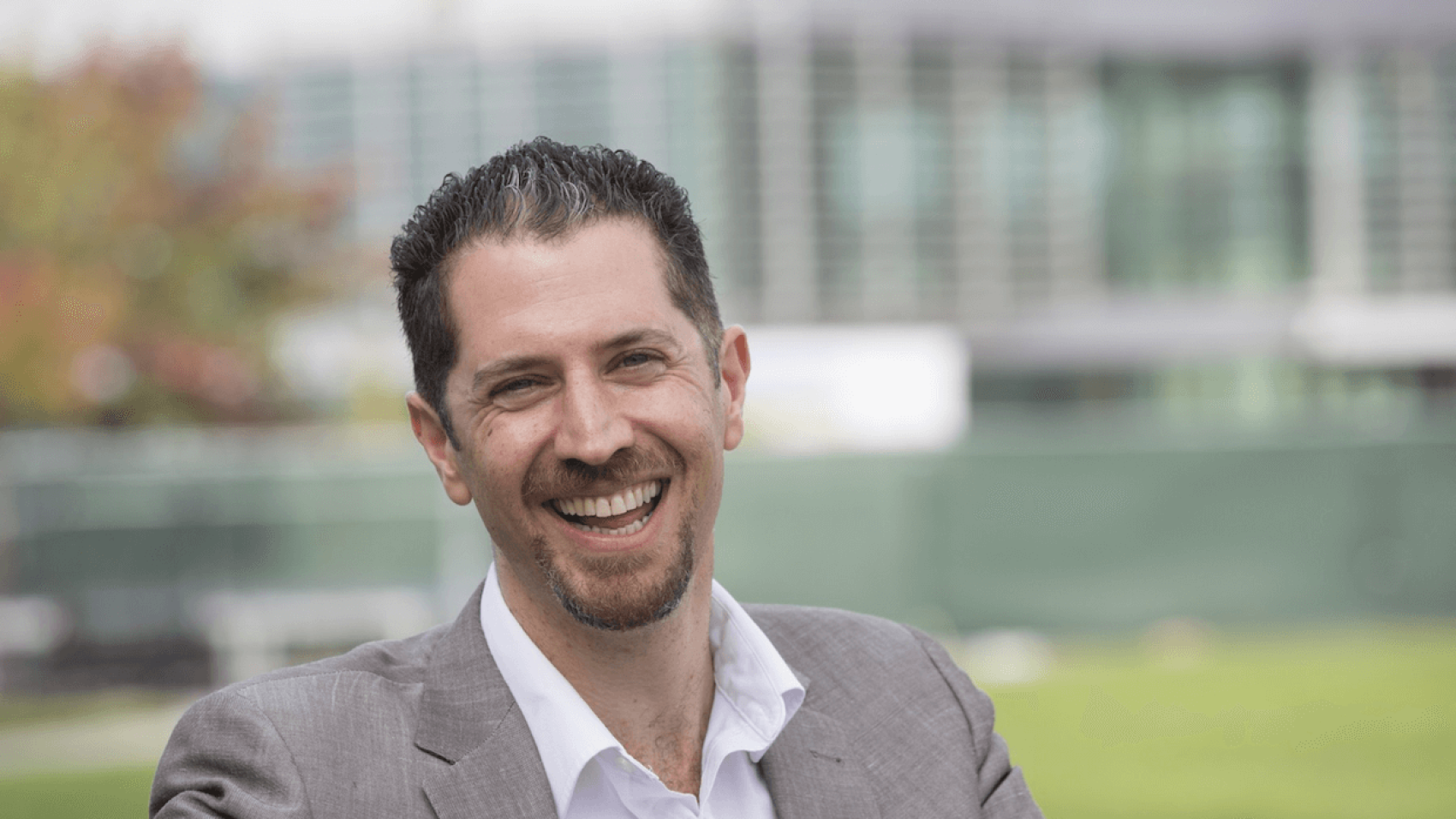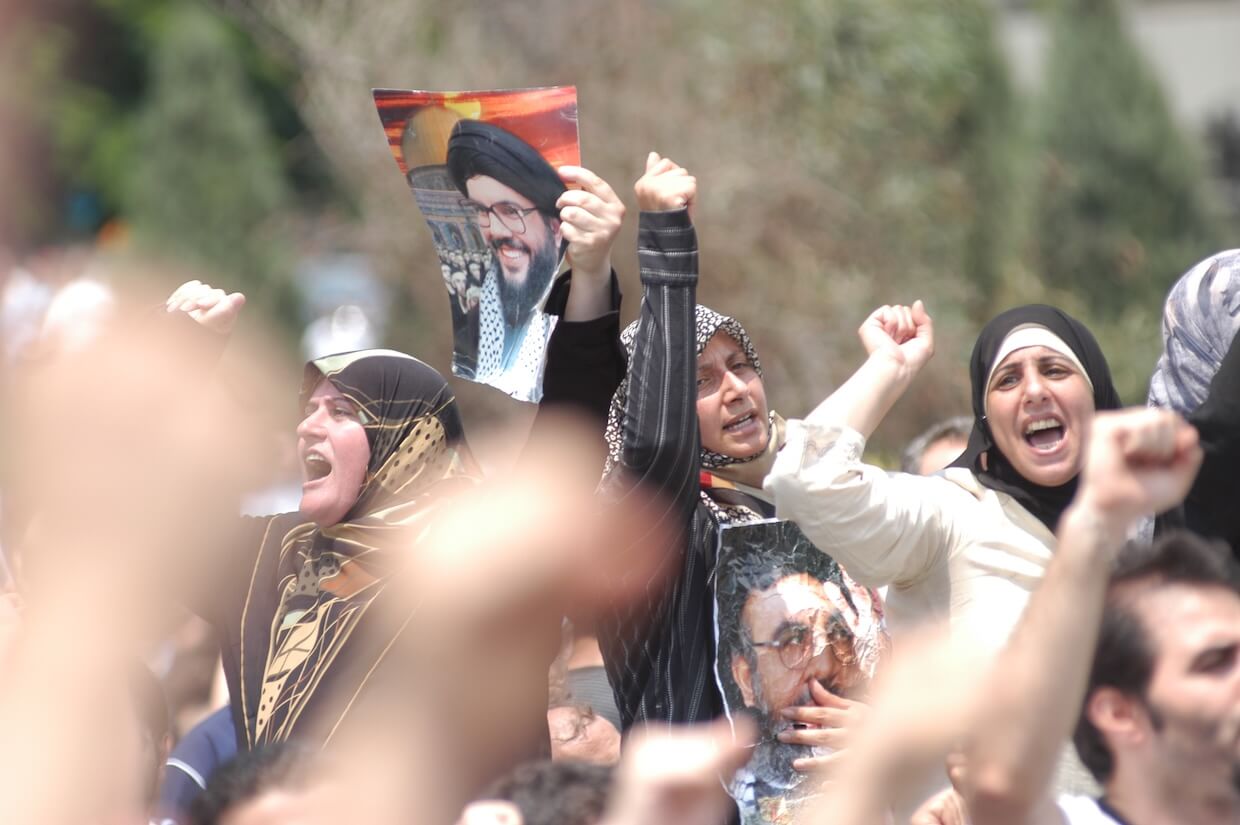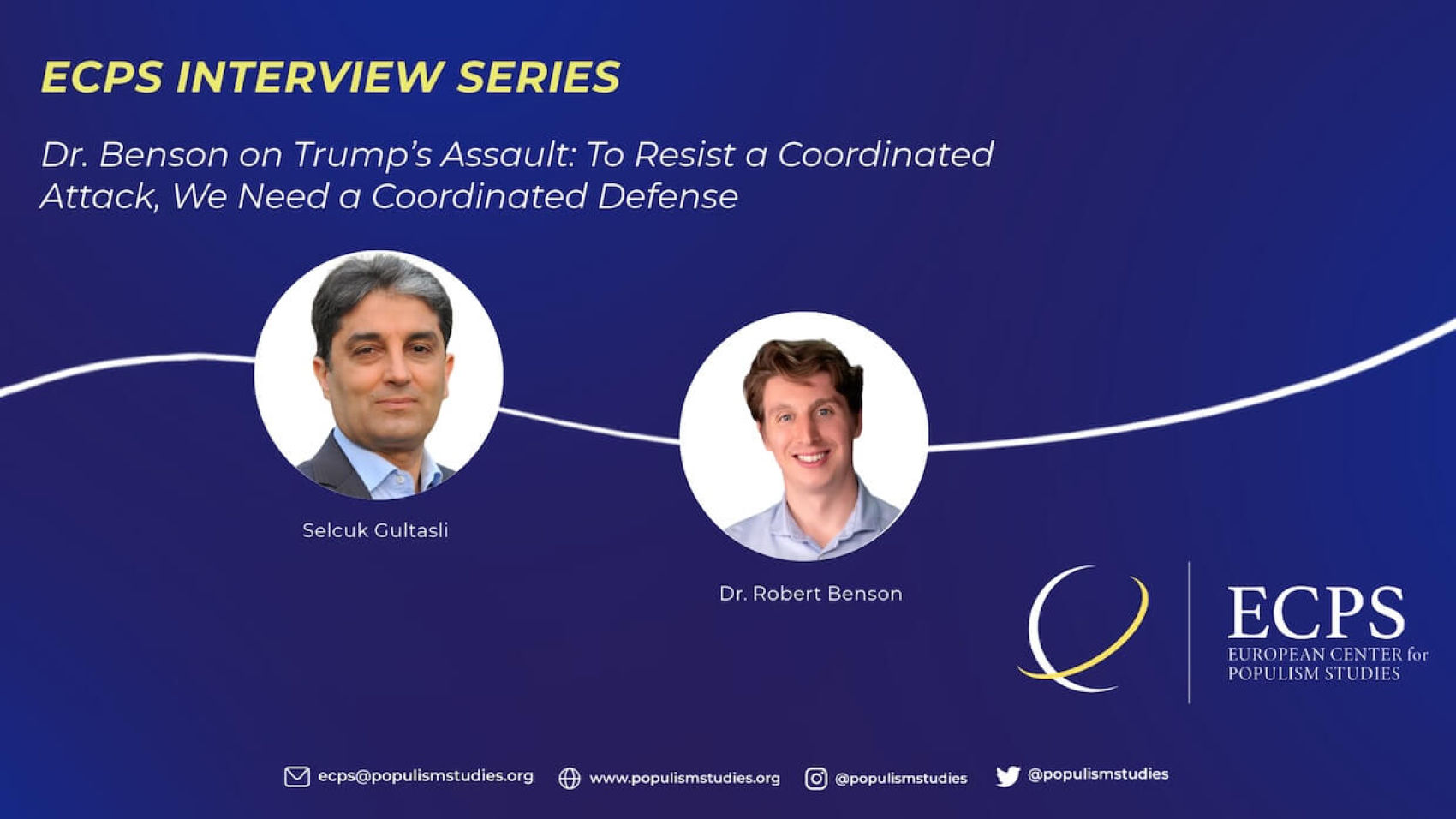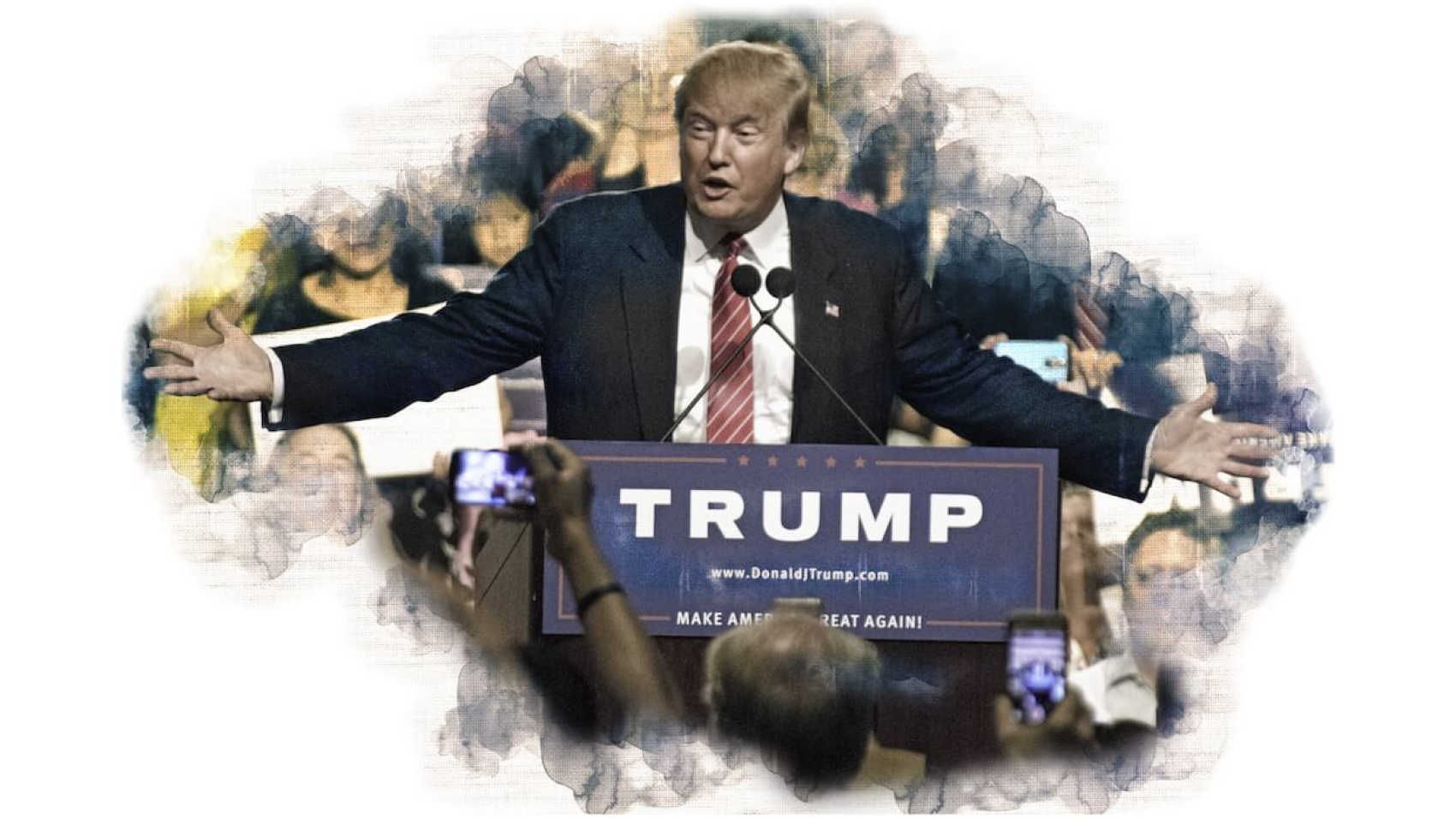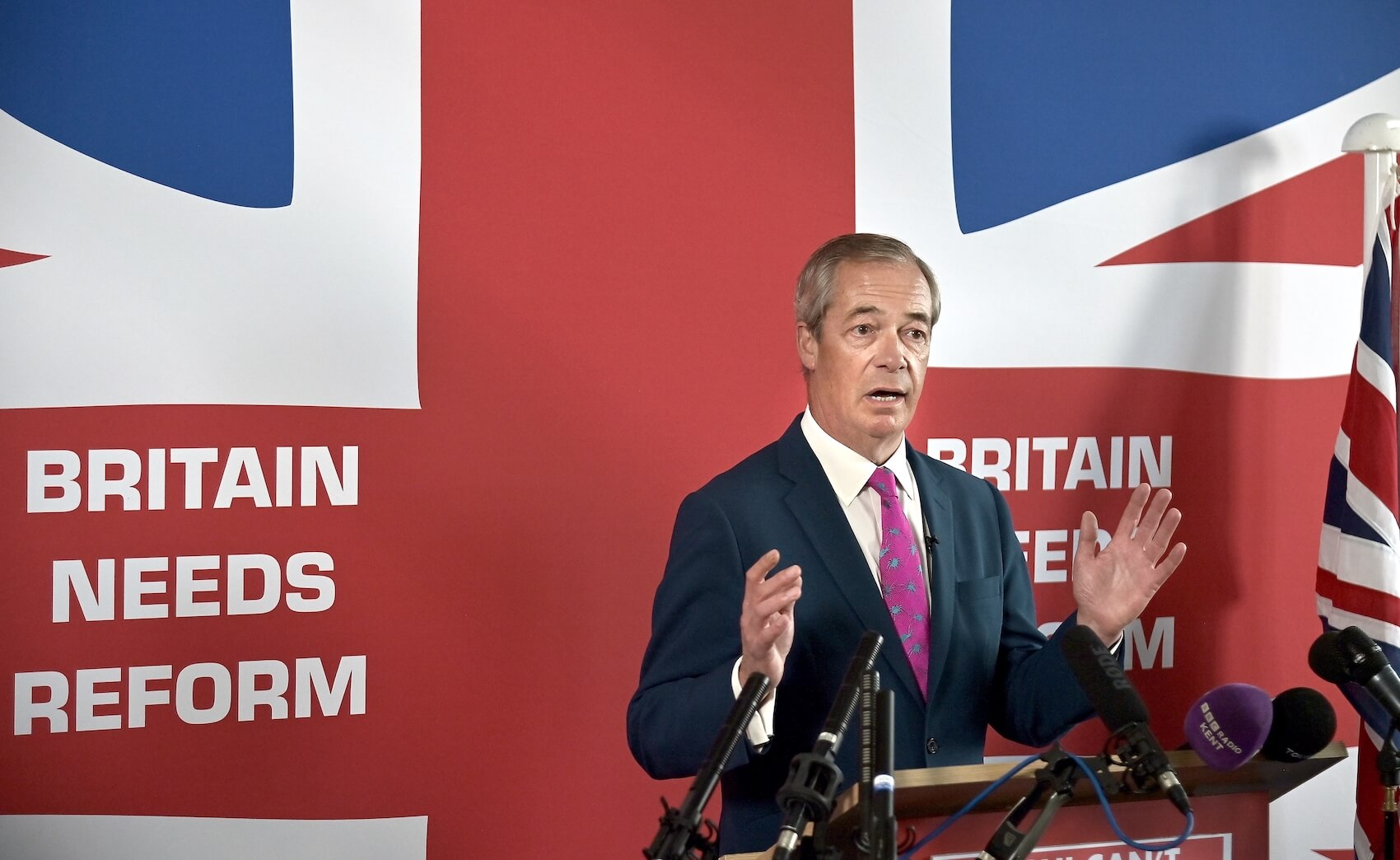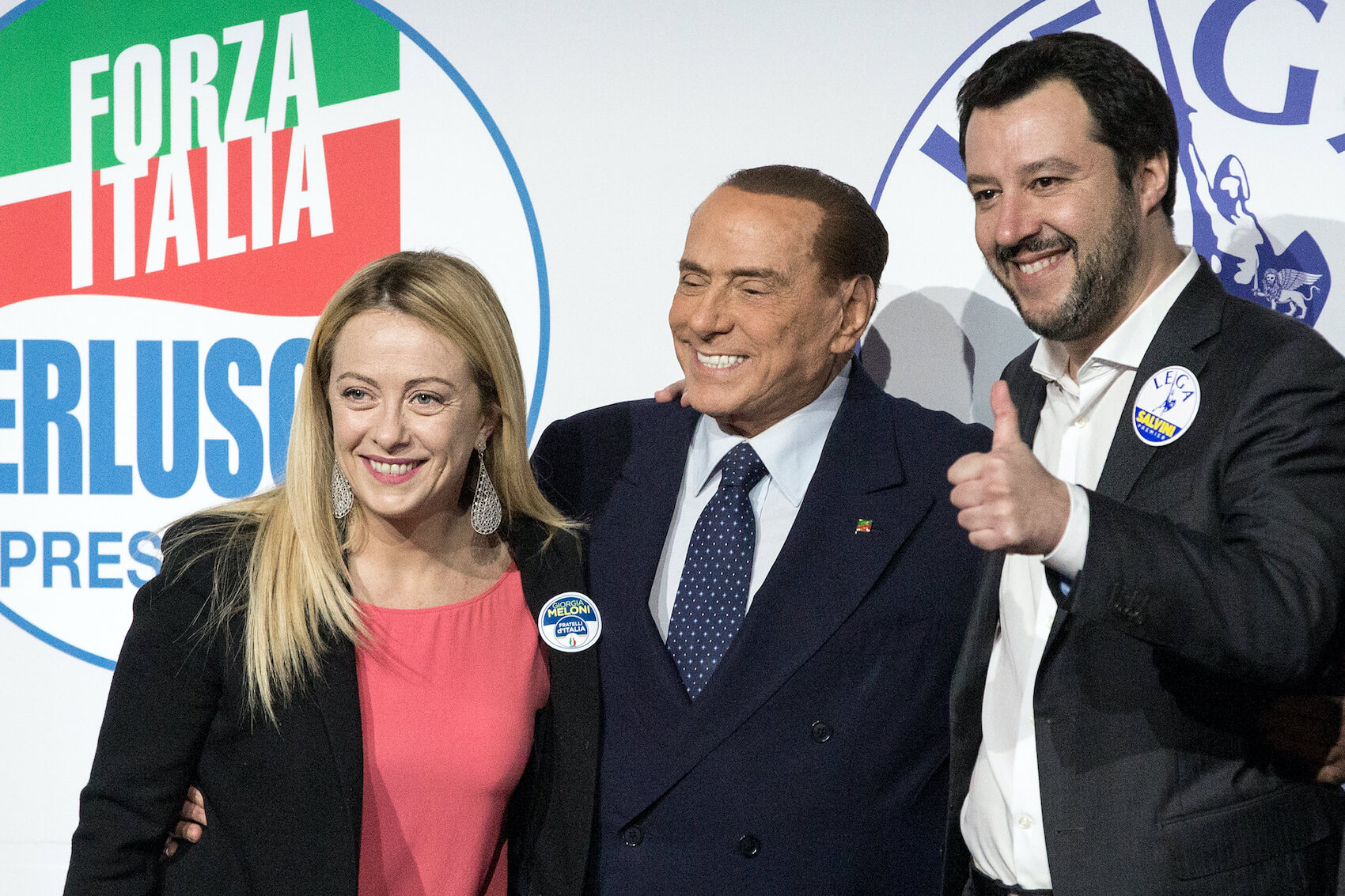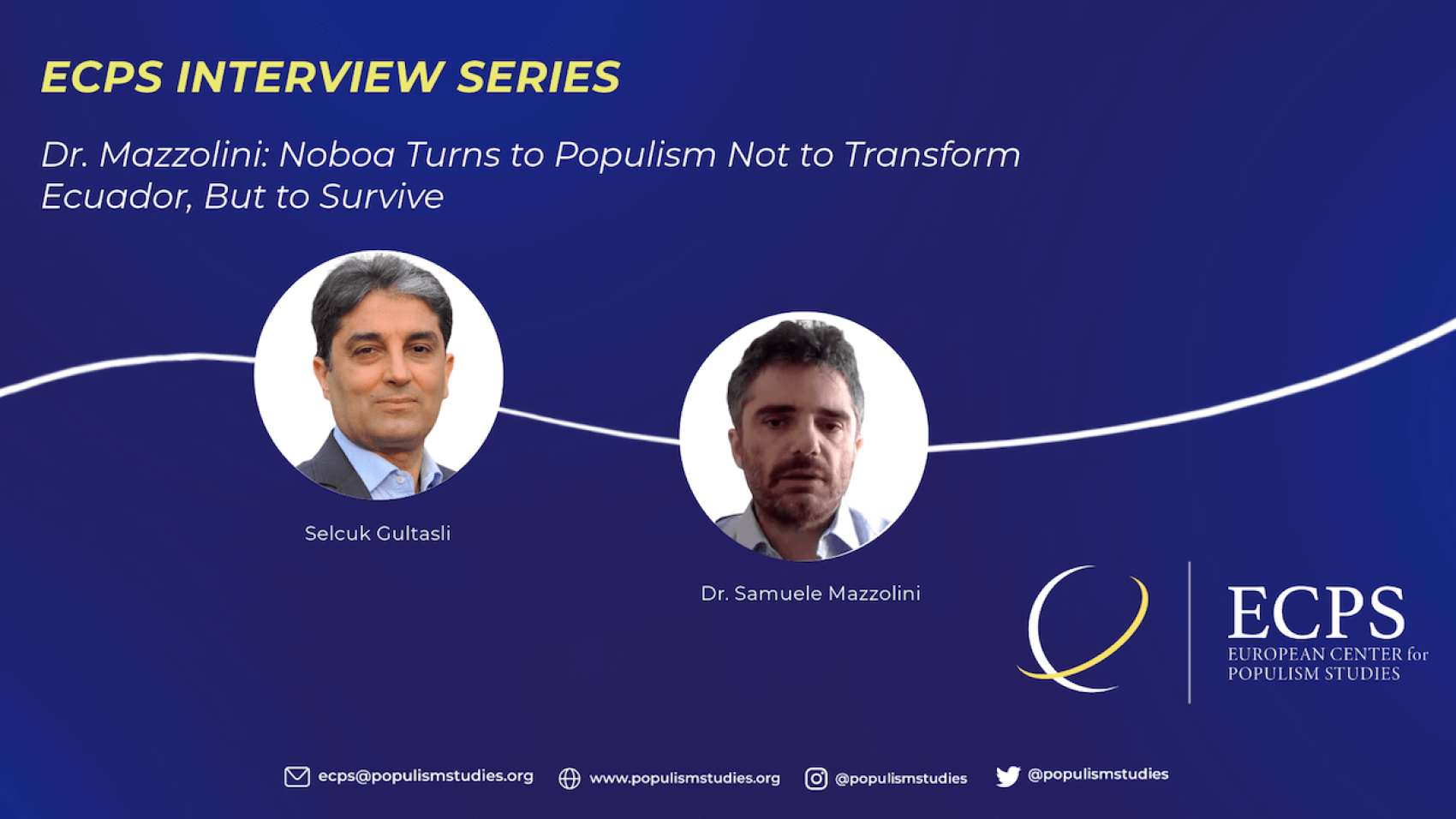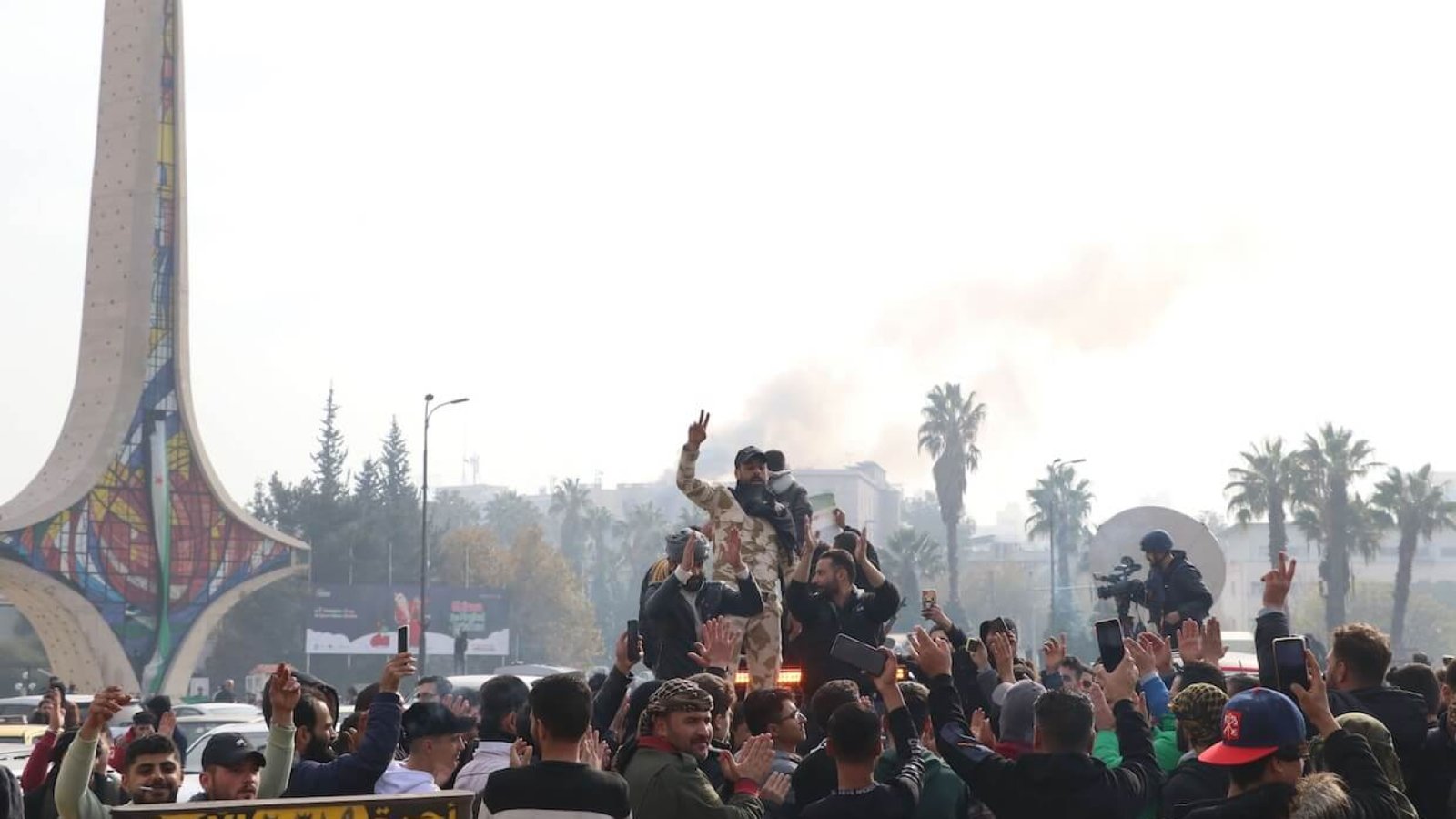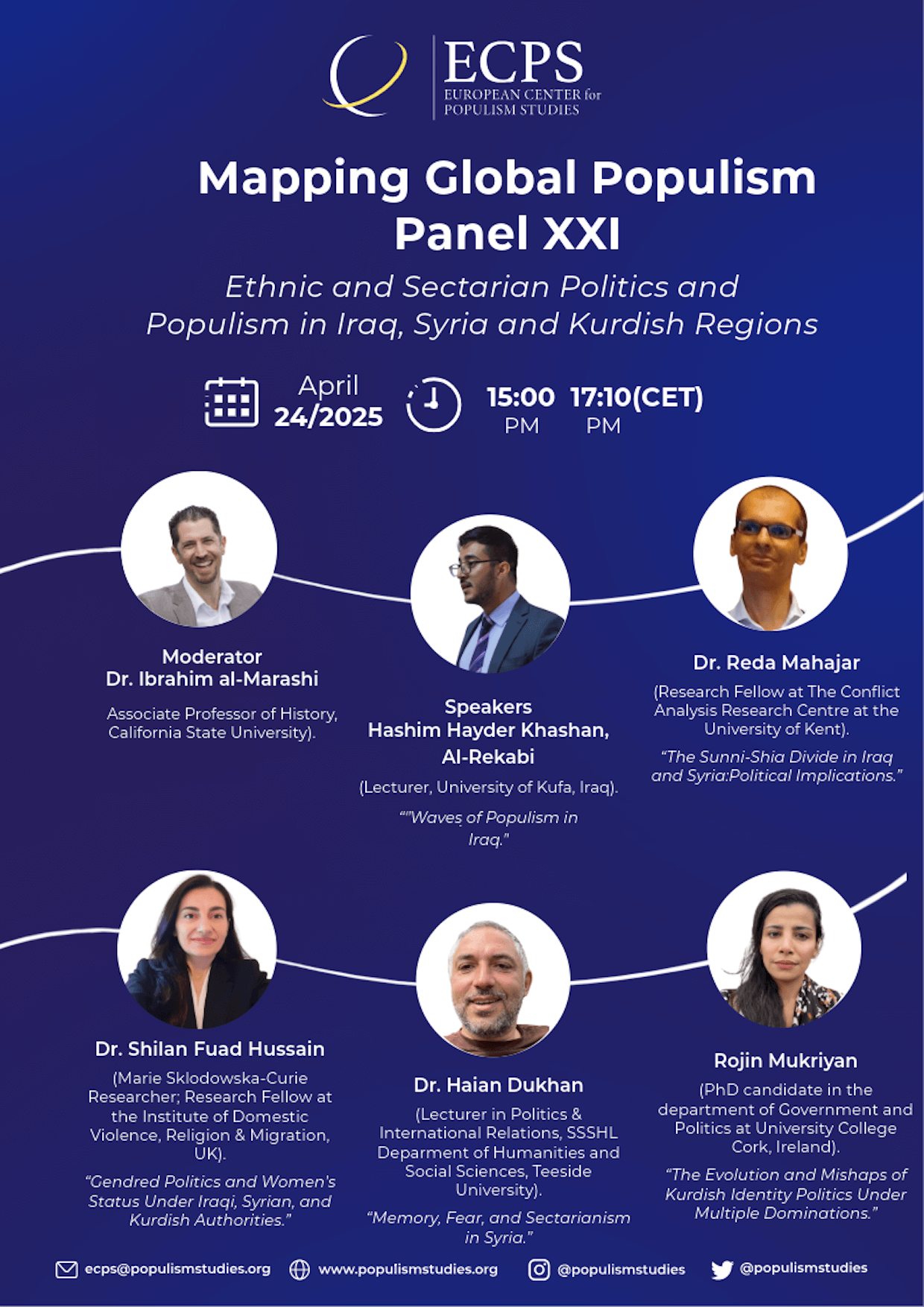Please cite as:
Lahti, Yannick & Palonen, Emilia. (2025). “Populism and EP Elections – Case Finland: Populism Gone Mad from Scissors and Chopping-board to Firing Guns and Latino Rush.” Populism & Politics (P&P). European Center for Populism Studies (ECPS). April 28, 2025. Doi: https://doi.org/10.55271/pp0049
Abstract
After two relatively successful recent elections, the far-right Finns Party (FP) approached the early summer 2024 European Parliament elections amid a supranational atmosphere suggesting that these elections would mark a “turn for the far right” across both Europe and Finland. After successfully leading her party to a historic victory one year earlier in the national elections of Finland 2023, Riikka Purra was, according to polls and pundit opinions, heading toward a new election record—this time in the European Parliament. Facing a charged political atmosphere in national politics and due to her visible role as the national treasurer, Purra’s FP party adopted the populist radical right strategy of their ID and ECR fellows in the EU, and instead of loudly criticising the Union, as has traditionally been the case with far-right parties, they too adopted the tactic of aspiring to “change the European Union from the inside.” This led their whole campaign strategy to declare the FP as the “most pro-Europe party of Finland.” As neighbouring country Russia’s illegal war in Ukraine had left the FP with a united front, the question of whether to support Ukraine or not did not even enter the elections. FP in this regard was and still remains the most anti-Russian party of the far-right party families in Europe. With media coverage being favourable toward a positive outcome for the FP, the party’s concrete message left something to be desired. The cases of now former FP members Timo Vornanen and Teuvo Hakkarainen, not to mention the “Riikka scissors and chopping-board minister” case, undermined a more coherent message to the Finnish electorate, who just over a year ago had voted for the FP in great numbers. Partly, this led to an overwhelmingly poor result for the Finns Party, which took most politicians and spectators by surprise. The European Parliament elections of 2024 in Finland stand out as an interesting exception within the far-right in Europe, as FP steadily lost support in various constituencies.
Keywords: Finns Party (FP), Populist radical right, Far-right, European Parliament 2024, Riikka Purra, Sebastian Tynkkynen, Finnish populist radical right, populist influence.
By Yannick Lahti* & Emilia Palonen**
Introduction – Towards the Elections
The 2024 European Parliament elections were preceded by two intense national contests: the parliamentary elections in 2023 and the presidential elections in January 2024. The National Coalition Party (Kokoomus) emerged first in both but also witnessed a significant rise of the far-right Finns Party (Perussuomalaiset).
The first significant election result of the anti-elitist Eurosceptic party was in 2011 marking a change in the party landscape within the national scale of politics in Finland (Arter, 2011; Palonen 2020). In the subsequent elections, the two opposition parties emerged victorious, and the Finns Party (FP) became one of the key governing parties in the government led by Juha Sipilä from 2015 to 2019. However, the party’s rank and file were dissatisfied, and in 2017, the FP split after electing Jussi Halla-aho as its new leader, marking a radical shift toward a nativist direction. The former party elite and some marginal factions emerged as new splinter groups on the political spectrum and registering as political parties (Fagerholm, 2022; Lahti & Palonen, 2023). By 2021, Jussi Halla-aho had handed over the party leadership to Riikka Purra, who continued to advance a strong nativist agenda. Under her leadership, the party achieved its best-ever result in the 2023 parliamentary elections, becoming the second-largest party in the country with 20.1% of the vote (620,981 votes). The FP then entered government for the second time, this time in coalition with the NCP, the Christian Democrats, and the Swedish People’s Party of Finland. The FP currently holds seven ministerial posts. Purra’s predecessor, Jussi Halla-aho, came from the far-right organization Suomen Sisu, which had established a strong foothold within the FP. Although Halla-aho stepped down in 2021, his nativist line has continued (Palonen, 2021).
Finland’s next-door neighbour, Russia, and its full-scale war in Ukraine have played a significant role for the Finns Party, even under the leadership of former chair—and current Speaker of the Finnish Parliament—Jussi Halla-aho, who completed his doctoral thesis at the University of Helsinki in Slavic studies. The party first marginalized its pro-Russian faction, notably removing MP Mika Niikko from his position as chair of the Foreign Affairs Committee in the Finnish Parliament as early as December 2021, prior to the attack on Kyiv. In 2023, the Finns Party also shifted from the ID group to the ECR group in the European Parliament (Lahti & Palonen 2023).
According to Heinö (2024), the Finns Party’s move from the ID to the ECR group coincided with its entry into the new Finnish government. Party leader Riikka Purra aimed to avoid unnecessarily provoking the coalition partners—particularly the newly appointed Prime Minister Orpo of the National Coalition Party—by signalling a more moderate and less radical approach to the party’s EU policies. However, just ten days into the new government, one of the Finns Party ministers, Vilhelm Junnila, resigned due to allegations of fascist references and neo-Nazi connections (Kuokkanen, Horsmanheimo & Palonen, 2023). Interestingly, both Junnila and Mika Niikko were candidates on the party list in the 2024 European Parliament elections.
In the presidential elections of January 2024, the Finns Party candidate Jussi Halla-aho finished fourth, securing 18.99 percent of the total vote (615,802 votes). Green Party (Vihreät) MP and former Foreign Minister Pekka Haavisto—running as an independent but backed by the Greens—and former National Coalition Party Prime Minister Alexander Stubb advanced to the second round, with Stubb ultimately winning by a narrow margin of 51.62 percent. Despite not making it to the runoff, Halla-aho maintained a strong presence on social media, and widespread opposition to the far right played a notable role in shaping the outcome.
The Finns Party largely fits into the Radical Right category as defined by Mudde (2019), who distinguishes between the anti-democratic Extreme Right and the Radical Right, which operates within democratic systems. However, Heinö (2024) notes that ideologically, the Finns Party is best described as a national conservative party—socially conservative while leaning left on economic issues. The party’s founder, Timo Soini, once famously referred to it as a “workers’ party without socialism” (Demokraatti, 2016). The party’s roots lie in the Finnish Rural Party, which challenged the Centre Party’s realpolitik under President Urho Kekkonen, Finland’s longest-serving president, particularly its friendly posture toward the Soviet Union (Palonen & Sunnercrantz, 2021).
Five new populist Radical Right parties emerged on the Finnish political scene since 2017 (Fagerholm, 2022). These include the Blue Reform movement (now known as the Finnish Reform Movement) and Suomen Kansa Ensin (Finnish People First), which has its origins in the anti-immigration Rajat Kiinni! (“Close the Borders!”) movement. Two personal splinters are on a more general populist line: Valta Kuuluu Kansalle (Power Belongs to the People, VKK), formed around Ano Turtiainen, a former FP member of Parliament, in 2021. The VKK has networks among the leaders and influencers of Finland’s digital pro-Russian counter public. Vapauden Liitto (Freedom Alliance), a splinter of the VKK, was founded in 2022 by a former FP activist, Ossi Tiihonen, who also ran for party chair and has been vocal against Finland’s COVID-19 measures. Ano Turtiainen and his Valta Kuuluu Kansalle party did not get re-elected in the 2023 parliamentary elections, and thus the party lost its only seat.
In the EP elections, Vapauden Liitto received 0.9% of the total votes (16,717). Also ideologically distinct was the proto-fascist, ethnonationalist Sinimusta Liike (Blue-and-Black Movement), which was also founded in 2022. However, on April 23, 2024, the Supreme Administrative Court of Finland de-registered the movement. In its ruling, the court found that the party’s program was anti-democratic and disrespectful towards human rights, thus strictly contrary to the Finnish Constitution and the European Union’s Charter on Human Rights (Yle, 2024). In the following month, May 2024, the Blue-and-Black Movement re-applied to be re-registered into the official party register by preparing to collect the necessary 5,000 signatures that it would require, but it was not able to nominate candidates for the European parliamentary elections of summer 2024.
Also, the opposition party, Liike Nyt (“Movement Now”), is noteworthy due to its populist tendencies, even as it can by no means be regarded as a populist radical left nor right-wing party. It is an emerging force that fashions itself after Italy’s Movimento Cinque Stelle (M5S), which successfully won seats outside the capital in the Finnish regional elections in 2021 (Yle, 2021). While a disproportionate number of the current leading figures of the FP hail from the universities and the teaching professions (Saresma & Palonen, 2022), Liike Nyt’s leadership consists of business elites that have been tied to Russian oligarchs (Luukka, 2022; Lahti & Palonen, 2023), which they now publicly disavow (Nalbantoglu, 2023). In the national elections of spring 2023, Liike Nyt managed to hold on to their one and only seat in the 200-seated parliament. The MP, co-founder, and chair Harry Harkimo also ran for president early 2024, arriving in last place out of 9 candidates with 0.53% of the votes (17,030). In the European Parliament elections, Liike Nyt had an electoral alliance with the Christian Democrats (Kristillisdemokraatit), who are serving in Orpo’s government. This alliance created a particular dynamic between an oppositional, rather liberal populist opposition party and a Christian conservative group serving in the government. The Christian Democrats’ candidate Eija-Riitta Korhola was clearly the most successful in this coalition, and with the exception of the multi-party debates, Liike Nyt was not very visible in the electoral campaigning.
Overall, with their two seats in the European Parliament and continuous representation since 2015—when then-party leader Timo Soini was elected—the Finns Party (FP) was the most relevant populist radical right party to observe in these elections.
The Finns Party in the European Parliament
In the context of the European Parliament, the Finns Party belongs to the ECR (European Conservatives and Reformists). The FP has traditionally been at least softly Eurosceptic; it has had a long-term goal of leaving the EU, but in the short term, it argues that Finland needs to remain in the union to defend Finnish interests. In the 2024 elections, this was contested, and the party seemed happy to remain in the EU in the long run. Initially, together with most of the Finnish population and parliamentary parties, the FP was also against NATO membership claiming the need for national sovereignty. The party changed its stance on this matter after the Russian invasion of Ukraine in 2022 (Lahti & Palonen, 2023) and is among the most anti-Russian of Europe’s populist parties (Heinö, 2024). In short, the FP has roots in strong anti-Soviet thinking and lacks the Russophilia of other far-right parties in Europe (e.g., France’s Rassemblement National and Italy’s Lega Nord). This is echoed in the current pro-Ukraine stance, which is also strengthened by the former party leader’s personal history. In this sense, their anti-Sovietism also turned them against Russia and for Ukraine. Finally, Halla-aho’s policy direction testifies to his emergence in the anti-immigration faction of his party (Vaarakallio, 2015). For these reasons, the question about Finland’s stance on the Russia-Ukraine war was not a theme in the European Parliament elections of 2024, even though overall security was. The party leader repeatedly raised two issues during the campaigning: Ukraine and migration. The leading MEP candidate MP Sebastian Tynkkynen of the FP also visited Georgia quite prominently during his campaign for the EP.
The MEPs for the Finns Party have included party chairs like Timo Soini and Jussi Halla-aho, but in 2019 two MEPs were elected after significantly successful elections: Teuvo Hakkarainen and Laura Huhtasaari. Eurosceptic Laura Huhtasaari, MP in 2015–2019 and again from 2023, ran for president in 2018 and received 6.9 percent of the vote with over 200,000 personal votes. A year later, running for the EP, she received 92,760 votes, which is a fine score in Finland, where, in the Finnish preferential voting system, voters choose a candidate within a party list to vote for. Teuvo Hakkarainen (29,083 votes in 2019) is an owner of a sawmill in central Finland who originally rose to the national parliament in 2011. Despite his personal popularity among voters since his first days in politics, he has been in the spotlight for perceived problematic language and conduct. Many claimed to have believed he was representing the interests of the forest industry in the EP for Finland. In the most recent news before the 2024 elections, MEP Hakkarainen was presented as largely absent from the parliamentary work, and he admitted having moved to Honduras, South America, in 2020. Laura Huhtasaari returned to the Finnish national parliament and was replaced by Pirkko Ruohonen-Lerner, a long-term Finns Party activist, who became an MP already in 2007 in the Soini era, serving in the European Parliament from a deputy seat in 2015–2019 and again in 2023–2024.
Indistinct EU-agenda and Other Issues
Even as the political climate as a whole seemed to be fatalistic toward an upcoming far-right surge in the context of the European Parliament elections of 2024, one ruling element alongside this was the fact that the FP party seemed to lack a direct focus and message in the upcoming elections. Events that had little to do with traditional day-to-day politics also emerged, as did some specific incidents such as the shooting affair of FP MP, now former FP member, Timo Vornanen.
FP published its EP2024 election program called “Päätetään itse – Let’s decide for ourselves” on April 24, 2024. The opening paragraph was as follows: The Finns Party is Finland’s most pro-Europe party. The people’s movement which is the Finns Party is uncompromisingly committed to protecting European civilization and to solving the many challenges facing Europe. Just as the Finns Party sees Finland as a refuge for Finns, Europe must first and foremost be the home of European nations.
This turned around the whole Eurosceptic undertones. Riikka Purra was mentioning in election debates the way in which authority in the EU lies within the member states. Moving away from Euroscepticism to a ‘critical European’ stance, as identified by Herkman and Palonen (2024) in the 2019 elections, the Finns Party appeared Eurosceptic, and the Centre Party (Renew) was critical European at home. It is relevant to point out that the FP declared themselves the most pro-Europe—not the most pro-EU—party of Finland.
Also in Finland, the FP EP2024 election campaign for the Finns Party kicked off in a period of hype for the far right in Europe (only that the Finnish media translated it to laitaoikeisto) (De Fresnes & Stenroos, 2024; Yle, 2024; Sutinen, 2024). Some scholarly opinions that were openly sceptical about a “far right tsunami” also emerged, as it was pointed out that the discourse within the European liberal media had been repetitive in this regard, considering the EP elections of 2014 and 2019 (Vaittinen, 2024). Yet, the major narrative remained widely fatalistic towards a “far right landslide” both nationally in Finland and elsewhere within the European Union member states.
Three factors negatively affected the Finns Party’s results: the Cases Vornanen and Hakkarainen, the jubilant Thatcherism of the party chair Purra, and the party list.
By the end of the same week of the official EP24 campaign start, an unfortunate shooting incident happened outside a nightclub. It involved a Finns Party MP since 2023, previously a policeman, Timo Vornanen, who fired his (legal) firearm (illegally carried) outside a bar not far from the Finnish parliament during the early hours of a Friday morning (Toivonen et al., 2024). Vornanen was immediately taken into police custody and later released facing official criminal charges. The incident was the political top news of the weekend and the week to come as the party had their campaign cruise event. Almost a week later, on May 2, 2024, the FP party dismissed Vornanen from its parliamentary group, and on May 9 the governing body of the FP ousted Vornanen from the party altogether, which led to him forming his one-man group in the parliament’s opposition.
Simultaneously with the case Vornanen, some unfavourable news governed the media sphere around the sitting Finns Party MEP Teuvo Hakkarainen as investigative journalists from the newspaper Helsingin Sanomat wrote about Hakkarainen’s de facto absence and lack of fulfilling his duties in the European Parliament (Teittinen, 2024; Teittinen & Elo, 2024). Commenting on his absences, MEP Hakkarainen referred to his “Latinokiireet”—translating as something like “being busy with Latino-related things” or “Latino business.” The news around Hakkarainen led to the party secretary of FP, Harri Vuorenpää, announcing that Hakkarainen would not be among the party’s picks to seek re-election in the upcoming European Parliament elections; the official reasons for his dismissal were never clarified (Harju, 2024). Contrary to his party’s wishes, MEP Hakkarainen claimed that he was seeking re-election anyway as an independent candidate from the list of the above-mentioned splinter group: Vapauden liitto (Freedom Alliance). This move was ultimately too much and resulted in the governing body of FP firing Hakkarainen from the party altogether. Hakkarainen continued to criticize his former political home, claiming that “FP has turned into a beagle (lapdog) of prime minister Orpo’s Central Coalition Party” (Hakahuhta et al., 2024; Sutinen & Toivonen, 2024).
Within the context of national politics, the party chair Purra started to obtain growing criticism about her online behaviour regarding the austerity politics in Prime Minister Orpo’s government and her role as the national treasurer. Purra posted on social media a picture of a gift she had received: two wooden chopping boards in the shape of an axe, with her face and the text “now is the time to cut” printed on them. A few weeks later, an MP of Purra’s party posted another picture on social media with an unapologetic and smiley Purra holding a big pair of scissors. Promoting a tight austerity regime, Purra was heavily criticized for her perceived lack of empathy and even glee towards what were seen as some of the heaviest public sector and social welfare cuts in the history of Finland, leading even to foreign media headlines such as: “Finland’s Thatcher tests limits of local frugality” (Kauranen, 2024). This is in stark contradiction with the historical takes of the Finns Party and its predecessor as guardians of the ordinary and vulnerable people.
With Hakkarainen, Huhtasaari, nor Halla-aho no longer on the list, the Finns Party list for 2024 was composed of less prominent figures but also included the very popular social media politician Sebastian Tynkkynen. FP vice chair and second-term MP Sebastian Tynkkynen stands among the leading figures but was not a minister of the unpopular government. He announced already in February that he was running in the upcoming elections with an “ambitious plan” (STT, 2024). Tynkkynen has been known as a widely skilful and provocative politician in terms of social media. Online video content allows the far right to affectively articulate and perform socio-political identities and construct relations to targeted audiences, and the Finns Party and Tynkkynen have been pioneers in Finland in this (Ekman, 2014; Salojärvi et al., 2023).
Tynkkynen, who proudly claims to have renewed his seat in the Finnish parliament in 2023 with a budget of 0€—relying only on creating online content—declared in his EP24 candidacy video that he intends to use the assistance money granted to members of the European Parliament in an unprecedented way for extensive framing. Tynkkynen’s bid and the rationale for it was an unprecedented case in Finnish politics, but it was not widely covered. In this case, the far-right politician’s goal was to act in the law-making parliament more as part of the journalists’ challenge and as a replacement for the media than as a legislator (Lahti & Mörttinen, 2024: 33). However, Tynkkynen was widely seen as one of the most potential winners of the upcoming elections, and the polls were favourable both to him and the FP, showing that the party might increase their seats from 2 to 3 (Hara, 2024; Hara & Särkkä, 2024).
Purra claimed the list was the best ever by the Finns Party. It included several figures known for their anti-immigrant and far-right stances, such as the short-lived minister of Orpo’s government in the summer scandal of 2023, MP Vilhelm Junnila. Even if Europe and Ukraine were Purra’s key issues, it also included Mika Niikko, who had been moved from party leadership for his earlier pro-Russian stances. None of these got questioned by the Finnish media. The most notable campaign ad by the FP during the late spring elections was one where traditionally masculine figures—two males working on construction—struggle to open a can of milk during their coffee break. The conclusion of the video is that due to EU regulation, the cork of the milk carton is an unnecessary nuisance. The punchline at the end of the video is the chosen FP party slogan: “Päätetään itse – Let’s decide for ourselves.” The realism behind this stance was also not much discussed. The public discussion around the campaign was focused mainly on the question of Ukraine and security, and the far right in the leadership of the European Parliament.
Given that the Finns Party was already the second party in the Finnish government, the EP elections also became a vote on the government. The opposition discourse was strong. SDP, the leading party of the previous government under PM Sanna Marin, was now the country’s main opposition party and, under the new leadership of MP Antti Lindtman, it was expected to do relatively well in the elections. Lindtman, facing the challenge of leading the SDP after the unprecedented Sanna Marin phenomenon, but also the historically most right-wing government of Finland in terms of fiscal policy since the Second World War, decided to embrace the so-called challenge of the “Rise of the European Far Right” and made the party’s entire campaign for the European Parliament in 2024 about repelling this rising.
Indeed, on May 4, 2024, the SDP announced that they would not collaborate with the far right in the European Parliament, promising that: “Every Finnish voter can be confident that the vote given to the SDP will definitely not promote the far-right’s rise to power in Europe.” Similarly to their self-stated political rivals, the SDP was also on the verge of getting their seat numbers increased from 2 to 3 inside the European Parliament. But they were not the only opposition party, and their party list was not as prominent as those for the Greens, the Left Alliance, or the Centre, who had several sitting or former MEPs and former party leaders. Even the Swedish People’s Party, who was slightly controversially in government again, now together with the Finns Party, had their party leader running for the European Parliament. The Sanna Marin phenomenon did contribute to these elections, boosting several former ministers of her cabinet and women into the Parliament.
Results of the Election
The momentum and media hype were on their side, but the far-right takeover did not happen in Finland. The election results came almost as a shock to the Finns Party leadership. Even until the last days before the election, the predictions suggested that the party would increase its seats from 2 to 3, even though the exact opposite happened: it lost one of its two seats. The party gained barely over half of their previous results in 2019: 7.6% of the vote (139,160 votes in total) compared to EP2019, where the party received 13.8%. They lost one of their two seats in the European Parliament, with Sebastian Tynkkynen being elected as the only one of his party, and Ruohonen Lerner lost her seat with only 0.4% of the vote (6,902 votes), while Junnila, shortly a minister in Orpo’s government, received 0.9% of the vote (16,357 votes), the second highest for the Finns Party. This came as a surprise to journalists, some media pundits, and researchers, as well as the FP chair Riikka Purra herself, as she commented on the results on election night: “Äärettömän huono – Extremely bad” (Strömberg 2024).
Perhaps more surprising was the success of Left Alliance (Vasemmistoliitto) chair and MP Li Anderson, who received personally a record number of 247,604 votes (13.5 percent of nationwide personal support), securing three seats for her party with 17.3% nationwide support (316,859 votes). The EPP’s Kokoomus won the elections, increasing their seats from three to four with 24.8% support (453,636 votes). The most popular candidate for Kokoomus was Mika Aaltola, an academic and leader of the Finnish Institute for Foreign Affairs known from his TV commentary, who had run as an independent candidate for president in January 2024: now he increased his personal votes to 95,757 votes, and a total of 5.2% national support. In the presidential elections, Aaltola had received 47,467 votes, a total of 1.5%. MP with expertise in military strategy, Pekka Toveri, with a similar public profile, was the second most popular. Curiously, the strategy adopted by the opposition leader Antti Lindtman for his party SDP did not bring the wished-for result, as the party had to settle for its two current seats without a poll-promised increase. The Greens lost one seat, but their two former party leaders and ministers secured seats in the EP, and the Centre and the Swedish People’s Party also retained two and one seats, respectively.
The splinter group Vapauden liitto (Freedom Alliance) got 0.9% (16,717 votes), with the former FP MEP Hakkarainen gaining 7,414 votes, thus not renewing his seat. Liike Nyt (Movement Now) received 0.5% of the vote share (9,641 votes altogether). Indeed, even though the FP did not do well due to a lack of a clear message, the message of opposing the far right and standing up for liberal democracy also did not resonate strongly with the voters of the SDP. However, the overall result can be seen as a victory for the opposition parties against those in government.
All Finnish citizens and EU citizens with permanent residency in Finland aged 18 and above were eligible to cast a vote. Similarly to the presidential elections, and contrary to the national parliamentary and municipal/regional elections, the entire country functioned as a single polling district. Voter turnout was 42.4%, a minor decrease from the previous elections, where the turnout was 42.7%.
In summary: the FP steadily lost support in various constituencies. In rural areas, where the support of the FP has been strong, the party’s percentage of support almost halved. It weakened significantly across the board in other ways as well, least of all in the core areas of large cities, where the FP generally gets little support.
Changes in electoral support for the FP can be observed as we compare the results of the previous European Parliament elections of 2019 to those of June 2024, gathered by the Suomen vaalidatapalvelu (Finnish election data service).
Outer frame area: 2019: 16.8% vs. 2024: 9.4%
Inner frame area: 2019: 14.5% vs. 2024: 8.2%
Countryside: 2019: 16.1% vs. 2024: 8.9%
A suburb or suburban area: 2019: 14.0% vs. 2024: 7.7%
Local center: 2019: 10.9% vs. 2024: 5.9%
The core area of big cities: 2019: 6.7% vs. 2024: 4.2%
Further Analysis: “Smile, You Are in the EU!” – The Finns Party’s Government Participation and Its Potential Influence on the Results
As has been widely established, in recent decades a growing number of various populist parties have succeeded in entering government coalitions with mainstream political parties—or even with other populist parties in Western Europe, such as is the case in Italy, for example. In Finland, the governing National Coalition Party faced the EU elections with a sense of calm and optimistic campaigning, as the party has traditionally been successful in these elections and is often regarded as the so-called EU party. The fact that the second largest party in both parliament and government—the Finns Party—was also fully campaigning under a pro-Europe message cannot be disregarded without underlining the paradoxicality and ironies that political reality sometimes brings forward in our field of studies.
Even as it is evident that a coalition government such as that of Prime Minister Orpo could proceed with the pragmatic “business as usual” attitude from a national politics point of view during another election, the fact remains that the national treasurer Purra was at the same time advocating for a very different future for the European Union. One cannot overlook the fact that the roots of her Finns Party lie fundamentally in the populist discourse of anti-elitism and Euroscepticism. Indeed, the founder of the Finns Party, Timo Soini, coined the phrase “Missä EU, siellä ongelma – Where there is the EU, there is the problem” into the history books of Finnish political rhetoric. Additionally, as mentioned before, just in January of the same year, the National Coalition Party had won the presidential elections with their candidate, former Prime Minister Alexander Stubb, who ran his campaign with a clear and steadfast angle on Finland being international, multilingual, and tolerant. It was also Stubb who, two decades ago, had launched his political career and risen to prominence as a young MEP with a famously unapologetic EU agenda for Finland. Stubb’s—back then still considered a progressive tool for political communication—blog was later published as a book: Hymyile, olet EU:ssa! Europarlamentaarikon päiväkirja – Smile, you are in the EU! A MEP’s Diary (Stubb, 2005; Lahti & Mörttinen, 2024).
This blatant conflict of interest between Prime Minister Orpo and Deputy Prime Minister Purra, as far as their parties’ EU policy was concerned, did not manifest itself publicly as a quarrel, but the undeniable tension on an ideological level politically requires further exploration—especially when analysing why the FP voters voted as they did (or as turned out to be the case: did not show up to vote). In general, when looking at the wide body of research investigating the changes in populist parties once they enter governmental positions, the question of populism’s moderation versus radicalization comes up for debate (Akkerman & de Lange, 2015; Albertazzi & McDonnell 2015; Krause & Wagner 2019).
Within the framework of the Finns Party and the surprising 2024 European Parliament election results, this scenario provides fruitful conditions to consider the weight of the contemporary argument which debates whether populist actors in government can exert a certain degree of influence on their coalition partners or if, conversely, they have to quit their populist and anti-system character under the impact of their “experience in office.” The questions proposed in these cases are often of the nature: “To what extent did populist parties succeed in influencing their government coalition partners, leading them to adopt a populist rhetoric and change their policy positions?” and “Have populist parties been successful in retaining their populist ‘outside mainstream politics’ identity, or have they been assimilated into mainstream parties?”
In the case of the EP2024 elections, the government of Prime Minister Orpo had not been in power for more than a year, and it had already overcome its most acute crisis: the mentioned summer scandal of 2023, regarding then-Minister MP Vilhelm Junnila, who as a result resigned. During and after this incident, Orpo’s government—under his leadership and his visibly loyal deputy, FP’s chair Purra—became known for repetitively referring to their ironclad commitment to the government’s program in the media. According to a textual analysis using corpus-assisted discourse studies, the results showed that the program was, in fact, very strongly driven and based on policies traditionally imposed and held in high regard by Orpo’s Central Coalition Party, and that Purra’s Finns Party had been given leverage in issues that were important to their core supporters, such as immigration policy, citizenship restrictions, and foreign aid to third-world countries (Lahti & Mörttinen 2023). This ensured that neither party was willing to “rock the boat” unnecessarily. From a practical point of view, it also means that whether populistic influence or, vice versa, non-populist influence was spreading within the coalition partners, it was too early a stage to identify any credible indications of it.
In terms of influence, we can accept Robert Dahl’s definition of it: “a relation among actors in which one actor induces other actors to act in some way they would not otherwise act” (Robert Dahl 1973, in Biard et al., 2019: 5). More widely, the actual concept of “political contagiousness” finds its roots in the field of electoral competition studies (Van Spanje, 2010), and it is firmly associated with the strategies political parties might adopt towards their (newcoming) competitors in an attempt to attract more voters. Direct populist influence, however, can be defined as follows: Populist influence is the impact exerted by populist parties on their government coalition partners in terms of communication contagiousness (people-centrism, anti-elitism, and general will) and policy position change (depending on the populist ideological attachment) (Napoletano, 2022: 60–61).
When investigating whether the FP was somehow assimilated into the mainstream parties from the point of view of the voter, it is relevant to note what happened to the party a decade ago when, in 2015, it entered into a centre-liberal coalition with the result of “a dramatic loss of popular support because it was not able to keep its promises” (Blanc-Noël, 2019: 69). The then leader and founder of the party, Soini, was seen as appeasing the coalition partners by moderating his pre-election agenda. In general, when this type of moderation takes place (Akkerman et al., 2016), populist parties certainly do not succeed in exerting a real influence on their coalition partners and, more extremely, they risk disappearing from the political scenario. Of course, what happened to the FP in 2015 until their splitting into two and later the resurrection into nationwide electoral success again is not explicitly comparable with what happened in the EP 2024 elections, as the context differs, but ignoring the fact that the FP has suffered sufficient loss in support before due to perceived moderation in times of a coalition government cannot be overlooked. It is important to underline that we are not arguing that the FP seriously altered their EU policy or, more prudently, their campaigning in the EP2024 elections due to the fact of political contagiousness—in this case, being in a coalition government with the traditionally pro-EU party of Finland, the National Coalition Party. We, however, note that their incoherent campaigning strategy and unorthodox message for the flagship party of Finnish Euroscepticism affected their traditional voter base, which has historically not been keen on voting in European Parliament elections to start with.
This alternation with the FP’s electoral support also challenges yet again the stances of many researchers between the end of the 1990s and the beginning of the 21st century, as they declared populism in power to be an “episodic” phenomenon that was not bound to last for a significant period of time. Indeed, in 2015, Albertazzi and McDonnell were among the first to argue that this conclusion was inaccurate and that, as a phenomenon, populism in power is here to stay. More interestingly, in regard to this paper, they claimed that populism in power is a “contagious” phenomenon able to make a concrete difference within the Western European political landscape.
Furthermore, Albertazzi and McDonnell claimed that, once in power, populist parties behave according to a combination of “responsiveness and responsibility” (Albertazzi & McDonnell, 2015: 170; Biard et al., 2019). As a consequence of this choice, part of the populist electorate will feel betrayed, although in the long run, populist parties succeed (to different degrees) in maintaining their electorate. Some authors have also tried to explain the variation of such success; Akkerman and De Lange (2012: 578) argued that post-incumbency electoral success of the populist radical right seems to depend on three main factors: 1. policy achievements, 2. the performance of populist radical right ministers, and 3. party strategies to maintain internal coherence. Especially factors 2 and 3 are important as we analyse what has contributed to the end result of the FP’s electoral success in the EP2024 election.
Conclusion
Throughout the elections, the contradiction was the fact that the political discourse and the analysis in the media seemed to concentrate on the unavoidable landslide victory of the far right in Europe as such. Considering first and foremost the diversity inside the so-called far-right family of party groups in Europe, we see that the starting point was missing the point from the get-go. The discourse always remained on a very general level, thus underplaying the different actors and variations which might come into play. In Finland, the populist radical FP was enjoying steady support, and yet the support and seats halved, while overall the national voting turnout remained more or less the same – a difference of 0.3%.
Confusion within the party due to the cases of Vornanen and Hakkarainen and the lack of a strong election strategy, narrative, and mission towards the European Parliamentary elections played a role. The political discourse around the FP was mostly on Purra’s provocative communication, the far-right threat in Europe, and the campaigning of the most successful online politician of the FP group, vice chair and now newly elected MEP, Sebastian Tynkkynen. His political supporters followed him and showed their loyalty during election day, but even his message was more about himself as a politician and his mission to broadcast more effectively and intensively, instead of commenting on what his contribution would be to the Finnish electorate.
As popular as Tynkkynen is among his online audiences and actual voters, it is reasonable to argue that his message might not have been that effective in mobilizing voters outside of the digital sphere. Considering that the FP’s main television ad also aired on various online platforms, with its milk carton EU-regulated corks and the declaration of the FP as the most pro-Europe party of the nation, contributed to the lack of a wholesome message. It is possible that in fact, in that regard, one of the variables in order to ensure party success—as mentioned earlier by Akkerman & De Lange (2012)—the FP did not successfully execute a comprehensive party strategy to maintain internal coherence, not at least from the point of view of the Finnish voter.
It is important to note again that the FP declared themselves the most pro-Europe—not the most pro-EU—party of Finland. This distinction is clear, and it can be hypothesized that this was created as an attempt to redefine what being pro-European and pro-EU meant in a Finnish political context. Whether or not this was a strategy and a bait by the FP, the fact remains that the whole EP election campaign theme went largely unnoticed by the media and political opponents. It bears mentioning that the FP party secretary Harri Vuorenpää had started his tenure by the end of August 2023 and was not as experienced as his predecessors. However, Vuorenpää’s role in the analysis on why the party underachieved in the EP2024 elections should not be overstressed.
Indeed, even as it can be argued that the FP did not moderate their stances on national policy issues towards those of their coalition partner, the National Coalition Party—as was indeed unnecessary from a voter-pleasing strategic point of view, since both parties had strongly committed to the government’s program—it was, however, unexpected and peculiar from a campaign strategy stance to attempt to overshadow the traditional pro-EU party by declaring itself superior in so-called Europe-positivity.
It can also be argued that the stance of being the most pro-Europe party in the country was considered an act of moderation as far as their EU policy was concerned. It is possible that the voters who loyally showed up for the FP during the parliamentary elections of 2023 and the presidential elections later were not convinced of this new direction—in addition to the fact that the FP voter base is the least interested in the EP elections, as is the case for the entire Finnish voter base.
Taking into consideration that the Finns Party candidate came in third place in Finland’s previous—and timewise very recent—presidential elections, all that can be stated at this point is that the zigzag, volatile, and effectively complete change in direction in terms of the rhetoric of the traditionally anti-EU party did not work. If anything, it remains a case in point of a populist party in a coalition government proving that their presence is not contagious to the non-populist parties, but on the contrary, the opposite happened. It is also a finding worthy of further research.
The hybrid threat posed by Russia, in terms of transporting immigrants and asylum seekers to Finland’s eastern border, was considered—and still is—more of a national and defence policy affair rather than something that directly concerns the EU. It should also be noted that the FP voter base prioritizes national, presidential, and lastly regional elections.
In conclusion, we suggest that the predicted far-right threat mobilized opposition party voters on a large scale. Even the Swedish People’s Party held on to their seat (which they were in danger of losing) at a time when their partnership in the Finnish government with the FP was widely criticized by their own electorate. The voter turnout in these elections—almost identical to the previous EP2019 elections—indicates that many FP voters stayed at home instead of casting their votes.
One of the interesting details to note is also the fact that the FP lost support in Lapland—an electoral district where they usually do well. The unprecedented electoral success of the Left Alliance leader Li Anderson also reflected in the results in the area, as she personally received 13.6% (7,049 votes). Additionally, the Centre Party (Keskusta) elected two female MEPs from Lapland, MP Katri Kulmuni and incumbent MEP Elsi Katainen. This can be seen as a less conservative move by the voters in Lapland.
As much as this result came as a surprise, even to the scholars who remained sceptical throughout the election about the so-called “Far right tsunami,” it should be noted that the FP still holds a strong position within national politics in the country and that these elections, with their surprising result, are too recent for us to draw any further conclusions about a far-right downfall in Finland.
Indeed, even as the FP faced the 2025 local and regional elections with challenges of a different nature (due to its core voter base and their unenthusiastic approach towards these elections) and even as they again underperformed greatly coming in at sixth place with an overall 7.6% vote share (overall 184 616 votes) and a 6.8% drop from previous elections it is not credible to announce a general degradation of the Finnish populist radical right, or even the Finns Party. As further analysis in upcoming research will show in greater detail whether these two elections the EP2024 and the following local and regional ones had any similarities as far as the FP party support is concerned, it has to be stated again that only as recently as in 2023 Riikka Purra led her party to an all-time victory in the parliamentary elections – an election which traditionally has been the one were the FP dominates. The future elections will provide more data for analysis in order to make conclusions of the Finnish far right in the long run. So far, there are no concrete indications which would lead us to state that a long-term demand for populist radical right parties would be fading away from the Finnish political landscape.
To conclude, the European Parliament elections of 2024 in Finland stand out as one of the interesting exceptions, as the FP steadily lost support in various constituencies against the most optimistic predictions. In the future, we researchers must remain in our current positions, where we do not feed the narratives often adopted by the liberal news media in which election X is either about the huge victory of the far right or the great defeat of liberal democracy, or vice versa. The issues leading to far-right support (steady and unsteady) are far more complex and multifaceted, as we know. The Finnish case also demonstrated a new emergence of the left in 2024.
The authors thank the Research Council of Finland (RCF) for co-funding the Trans-Atlantic Platform Consortium project “ENDURE: Inequalities, Community Resilience, and New Governance Modalities in a Post-Pandemic World” (funding number 352413).
(*) Yannick Lahti is a political scientist and a former postdoctoral research fellow at the University of Helsinki. Lahti obtained his PhD-degree in 2022 from the University of Bologna in Italy. In his research, he examined European populism, populist actors, and political communication during the European Union elections of 2019 within the Hybrid Media system. In his work Yannick Lahti departed from the consideration that as populism and populist rhetoric are challenging concepts to define – especially in relation to different media environments; they should be addressed and analyzed through the usage of a combination of methods and theoretical perspectives, namely Communication Studies, Corpus Linguistics, Political theory, Rhetoric and Corpus-Assisted Discourse Studies. Recently Lahti was involved with Whirl of Knowledge project and until 2023 conducting research for the transatlantic ENDURE-project funded by the Finnish Academy (Suomen Akatemia). Now as an independent scholar with a funding of C. V. Åkerlund mediafoundation, Yannick Lahti is conducting further research on populist radical right politics and its impacts on democracy. Right now Lahti is also working together with award winning journalist Matti Mörttinen on their third collaboration: a book titled: Jäähyväiset demokratialle (A Farewell to Democracy) which will be published in spring 2026. The researcher-journalist pair has previously published two books called Populismin anatomia / The Anatomy of Populism (2023) and Politiikan pinnan vangit / The prisoners of political shallowness (2024) which both received critical and commercial acclaim in Finland.
(**) Emilia Palonen is Associate Professor, Senior University Lecturer in Political Science, University of Helsinki. Currently Emilia is on research leave as Programme Director in Datafication at the Helsinki Institute for Social Sciences and Humanities and as Leader of HEPPsinki research group. She is PI of Academy of Finland project WhiKnow (2019-2022), Kone Foundation project Now-Time Us Space (2020-24), European Commission funded DRad project (2020-2023), and Academy of Finland and other Trans-Atlantic Partnership project funders’ ENDURE exploring resilience in crisis (2022-2024). Palonen has been evaluated as fit for full and associate professor (2022). She received in 2015 a title of Docent (Adj./Ass. Prof.) in Political Science (spec. Cultural Politics), University of Jyväskylä, where has taught and collaborated in research projects.She is an engaged scholar in media and associations: She is an Executive Committee member and chair of the publications committee of the International Political Science Association (IPSA). She served in 2018-2022 as the Chair of the Finnish Political Science Association. She is a board member of the Finnish Federation of Learned Societies (2021-2023), and Treasurer of the Society of Scientists and Parliament Members, Tutkas ry. (2019-2023).Palonen is a discourse theorist and an expert on politics, polarisation and communication, populism and democracy, local participative governance and planning. She has been working on politics of memory in symbolic urban landscapes but also populist movements and even the far right. Besides her expertise on Hungary since 1999, she has been actively following Finnish politics and authors the EJPR Political Data Yearbook on Finland. Academically she is particularly interested in Europe but also engages worldwide. She is an active and engaged scholar invited for talks.
References
Akkerman, T.; Lange, S. D. L. & Rooduijn, M. (2016). Radical Right-Wing Populist Parties in Western Europe: Into the Mainstream? (Routledge Studies in Extremism and Democracy) (1st ed.). Routledge.
Akkerman, T. & de Lange, S. L. (2012). “Radical Right Parties in Office: Incumbency Records and the Electoral Cost of Governing.” Government and Opposition, 47(4), 574–596.
Albertazzi, D. & McDonnell, D. (2015). Populists in Power. Oxon: Routledge.
Arter, D. (2020). ‘Taking the Gilt off the Conservatives’ Gingerbread: The April 2011 Finnish General Election, in 34 West Eur. Polit. 6, 1284–1295 (2011); E. Palonen, Populismin muoto, diskursiivisuus ja retoriikka. Analyysi soinilaisuudesta, in 62 Politiikka 2, 125–145 (2020).
Balfour, R. & Lehne, S. (2024). “Charting the Radical Right’s Influence on EU Foreign Policy.”
Carnegie Europe. Publications Department.
Blanc-Noël, N., (2019). “When Governing Is Losing Advantage: Denmark and Finland, Two Opposite Cases of Radical Right Pospulist Parties’Influence on Policy Making.” In: Biard, B., Laurent., B., & Betz, H., G., (ed), Do they Make a difference? The policy influence of radical right populist parties in Western Europe. London: ECPR Press, (57 – 78)
Biard, B.; Bernhard, L. & Betz, H.-G. (2019). Do they make a difference?: The policy influence of radical right populist parties in Western Europe. London: ECPR Press.
Dahl, R. A. (1956). A preface to democratic theory. Chicago, IL: The University of Chicago Press.
Demokraatti (2016, November 11th). Nyt se tuli selväksi: Näin määritellään perussuomalaiset – Timo Soini kertoi itse. Demokraatti-magazine. https://demokraatti.fi/nyt-se-tuli-selvaksi-nain-maaritellaan-perussuomalaiset-timo-soini-kertoi-itse
De Vries, CE and Hobolt, SB (2020). Political Entrepreneurs: The Rise of Challenger Parties in Europe. Princeton: Princeton University Press.
Elo, E. & Teittinen, P. (2024, March 3). Lähes viisi vuotta, kolme ilmoitettua tapausta – HS kävi läpi Teuvo Hakkaraisen toimia europarlamentissa. Helsingin Sanomat. https://www.hs.fi/politiikka/art-2000010281749.html
Ekman, M. (2014). “The Dark Side of Online Activism: Swedish Right-Wing Extremist Video Activism on YouTube.” MedieKultur: Journal of Media and Communication Research 30 (56): 79–99. https://doi.org/10.7146/ mediekultur.v30i56.8967.
Fagerholm, A. (2022). Nya ytterhögerpartier i Finland (2000–2022): En översikt. Politiikka, 64(3). https://doi.org/10.37452/politiikka.117042
Hakahuhta, A.; Hyytinen, T. & Muilu, H. (2024, May 13). ”Purra: Vornasen ja Hakkaraisen erottamisen syyt ”kaikille selvät” – Hakkarainen: perussuomalaisista on tullut kokoomuksen beagle.” Yle News. https://yle.fi/a/74-20088330
Hara, J. & Särkkä, N. (2024, May 2). Ylen eurovaalimittaus: Kokoomus suosituin puolue – RKP ja vihreät menettämässä meppipaikan. Yle News. https://yle.fi/a/74-20086411
Hara, J. (2024, June 6). Ylen eurovaalimittaus: Vihreät menettämässä kaksi meppipaikkaa ja RKP ainoansa – perussuomalaiset vahvistunut. Yle News. https://yle.fi/a/74-20090719?fbclid=IwZXh0bgNhZW0CMTAAAR2XWJQiKyFTlaSfz40RlfSeE4OFk14JsCw7bN42UQ5X-bF3F0ZiMZEYWbc_aem_OJRsVVjKayb-75pk0z0Uzw
Heinö, A., J. (2024, April 16). Timbro – Auhtoritarian Populism Index 2024. EpicCenter; European Policy Information Center. https://www.epicenternetwork.eu/publications/timbro-authoritarian-populism-index-2024/
Herkman, J.; Sibinescu, L.; Palonen, E. (2024). “Finland: Populist Polarisation of the Finnish Political Communication.” In: Herkman, J., Palonen, E. (eds) Populism, Twitter and the European Public Sphere. Palgrave Macmillan, Cham. https://doi.org/10.1007/978-3-031-41737-5_4
Kauranen, A. (2024, April 29). “Finland’s Thatcher tests limits of local frugality”. Reuters, Europe. https://www.reuters.com/world/europe/finlands-thatcher-tests-limits-local-frugality-2024-04-29/
Kervinen, E. (2024, June 10). ”Perussuomalaisten kannatus maaseudulla romahti – Tilastot näyttävät, missä vaalit voitettiin ja hävittiin.” Helsingin Sanomat. https://www.hs.fi/politiikka/art-2000010488350.html
Kisic Merino, P. and C. Kinnvall. (2023). “Governing Emotions: Hybrid Media, Ontological Insecurity and the Normalisation of Far-Right Fantasies.” Alternatives: Global, Local, Political 48 (1): 54–73. https://doi.org/10. 1177/03043754221123467.
Kuokkanen, K.; Horsmanheimo, L. E. & Palonen, E. (2023). “Conceptualising Finnish deradicalisation policies: Implicit or explicit, projectified or institutionalised?” DPCE Online, 59(2), 2019-2038. https://doi.org/10.57660/dpceonline.2023.1956
Krause, W. and Wagner, A (2019). “Becoming Part of the Gang? Established and Nonestablished Populist Parties and the Role of External Efficacy.” Party Politics, 27(1), 161–173
Lahti, Y., & Palonen, E. (2023). “The impact of the Russia–Ukraine War on right-wing populism in Finland.” In: G. Ivaldi, & E. Zankina (Eds.), The Impacts of the Russian Invasion of Ukraine on Right-Wing Populism in Europe: A report by European Center for Populism Studies (ECPS) (pp. 126-138). European Center for Populism Studies (ECPS). https://doi.org/10.55271/rp0018, https://doi.org/10.55271/rp0010
Lahti, Y. (2022). Populism as a battlefield; Populist actors and their representation on social and legacy media during the European parliament elections 2019 in Finland, Italy and the Netherlands. University of Bologna.
Lahti, Y. & Mörttinen, M. (2024). Politiikan pinnan vangit. Into publishing.
Lahti, Y. & Mörttinen, M. (2023). ”Hallitusohjelma on oikeistolainen, mutta vain tietyin osin populistinen”. Kanava lehti 5/23.
Luotonen, A. (2024, June 6). Analyysi: Vaaleilla oli yksi todellinen voittaja ja yksi suuri häviäjä. Yle News. https://yle.fi/a/74-20092968
McDonnell, Duncan and Annika Werner. (2020). International Populism: The Radical Right in the European Parliament (2020; online edn, Oxford Academic, 17 Sept. 2020), https://doi.org/10.1093/oso/9780197500859.001.0001(accessed 26 June 2024).
Moffitt, B. (2022). “How Do Mainstream Parties ‘Become’ Mainstream, and Pariah Parties ‘Become’ Pariahs? Conceptualizing the Processes of Mainstreaming and Pariahing in the Labelling of Political Parties.” Government and Opposition. 57(3):385-403. doi:10.1017/gov.2021.5
Nalbantoglu, M. (2023, February 2). ”Harkimo: Yhteistyö venäläisten kanssa ja Jokerien vieminen KHL:ään oli virhe.” Helsingin Sanomat. https://www.hs.fi/politiikka/art2000009336531.htm
Napoletano, A. (2022). A Double chance to investigate populist influence: The Five Star Movement. University of Bologna.
Palonen, E. (2023, Apr 30). New populist dynamics: Is political polarisation emerging in Finland? Colégio de S. Jerónimo.
Palonen, E. (2021). “The New Leader of the Finns Party Reinforces an Illiberal Turn.” The Loop ECPR’s Political Science Blog. https://theloop. ecpr.eu/the-new-leader-of-the-finns-party-reinforces-anilliberal-turn/
Palonen, E. & Sunnercrantz, L. (2021). “Nordic populists as hegemony challengers.” In: The Nordic Economic, Social and Political Model. Routledge.
Saresma, T. & Palonen, E. (2022). “On the emergence of alt-science counterhegemony: The Case of the FP.” In: H. Eslen–Ziya, & A. Giorgi (Eds.), Populism and science in Europe (pp. 117–40). Palgrave Macmillan. https://doi.org/10.1007/978-3-030- 97535-7_6
Salojärvi, V.; Palonen, E.; Horsmanheimo, L. & Kylli, R. M. (2023). ”Protecting the future ‘Us’: a rhetoric-performative multimodal analysis of the polarising far-right YouTube campaign videos in Finland.” Visual Studies, 38(5), 851–866.
Sutinen, T. & Toivonen H. (2024, April 30). ”Teuvo Hakkarainen EU-vaaleihin Vapauden liiton listalta.” Helsingin Sanomat. https://www.hs.fi/politiikka/art-2000010397060.html
Strömberg, J. (2024, June 9). ”Perussuomalaisten kannatuksen romahdus tuli Purralle yllätyksenä: ’Äärettömän huono tulos’.” Yle News. https://yle.fi/a/74-20093012
Stubb, A. (2005). Hymyile, olet EU:ssa! Europarlamentaarikon päiväkirja. WSOY.
Teittinen, P. (2024, March 31). T”euvo Hakkarainen vetosi latinokiireisiin, HS:n tutkimat läsnäolotiedot herättävät lisää kysymyksiä.” Helsingin Sanomat. https://www.hs.fi/politiikka/art-2000010315678.html
Toivonen, T., Kangas, L. & Strömberg, J. (2024, April 13). „PS:n puoluesihteeri: Aseen käytöstä epäilty Vornanen on vapautettu – tämän tiedämme kansanedustajan rikosepäilystä nyt.” Yle News. https://yle.fi/a/74-20086052
Vaarakallio, T. (2015). “The ideological framework of the French Nouvelle Droite and The contemporary Finnish Far Right.” Redescriptions: Political Thought, Conceptual History and Feminist Theory, 18(2), 202–24. https://doi.org/10.7227/R.18.2.5
Vaittinen, H. (2024, March 19). “Oikeistopopulistit koristelivat seinät Putin-kuvilla ja poseerasivat fanipaita päällä – ”Perussuomalaiset positiivinen poikkeus”. MTV-Uutiset. MTV News. https://www.mtvuutiset.fi/artikkeli/oikeistopopulistit-koristelivat-seinat-putin-kuvilla-ja-poseerasivat-fanipaita-paalla-perussuomalaiset-positiivinen-poikkeus/8900964
Van Spanje, J. (2010). “Contagious Parties: Anti-Immigration Parties and Their Impact on Other Parties’ Immigration Stances in Contemporary Western Europe.” Party Politics, 16(5), 563–586.
Widfeldt, A. (2018). The Radical Right in the Nordic Countries.
Yle News (2024, April 23). ”KHO: Fasistisen ja rasistisen sinimustan liikkeen puoluerekisteröinti on purettu.” STT/ Yle News. https://yle.fi/a/74-20085074
Yle News (2021, June 16). “Municipal elections: Result service.” https://vaalit.yle.fi/kv2021/ en
Online Material
Finns Party: Election program for the European Parliament elections of 2024 (Published 24th of April 2024). https://www.perussuomalaiset.fi/ajankohtaista/psn-eu-vaaliohjelma-on-julkaistu-katso-julkistustilaisuus-suorana-klo-9-30-alkaen/
Press Release: (2024, May 4). Social Democratic Party: Emme tee yhteistyötä laitaoikeiston kanssa – SDP. Online source: Euroopan sosialidemokraattinen puolue: Emme tee yhteistyötä laitaoikeiston kanssa – SDP

